Can you die from cirrhosis of the liver. Alarming Rise in Liver Disease Deaths: Causes, Trends, and Prevention Strategies
What are the main causes of death in cirrhosis. How has the rate of liver disease deaths changed in recent years. Which age groups are most affected by the increase in liver-related deaths. What factors contribute to the rise in liver disease mortality. How can liver disease be prevented and managed effectively.
The Surge in Liver Disease Mortality: A Growing Public Health Concern
Recent studies have revealed a troubling trend in the United States: a significant increase in deaths related to liver disease and liver cancer. This surge has been particularly pronounced since 2009, with certain demographic groups experiencing more severe impacts than others. The rise in mortality rates has been attributed to various factors, including excessive alcohol consumption, hepatitis C, and non-alcoholic fatty liver disease.
Key Statistics on Liver Disease Deaths
- 65% increase in cirrhosis deaths between 1999 and 2016
- 100% increase in liver cancer deaths during the same period
- 11% annual increase in cirrhosis deaths among 25-34 year-olds from 2009 to 2016
- 43% increase in liver cancer deaths for men aged 25 and older between 2000 and 2016
- 40% increase in liver cancer deaths for women aged 25 and older in the same timeframe
These statistics paint a grim picture of the escalating liver disease crisis in the United States. The rapid increase in mortality rates, especially among younger adults, has raised concerns among healthcare professionals and researchers alike.

Understanding Cirrhosis: The Silent Killer
Cirrhosis is a progressive liver disease characterized by the replacement of healthy liver tissue with scar tissue. This scarring impairs the liver’s ability to function properly, leading to potentially fatal complications. Can cirrhosis be reversed? In its early stages, cirrhosis can be halted or even reversed with appropriate treatment and lifestyle changes. However, advanced cirrhosis is irreversible and may require a liver transplant.
Primary Causes of Cirrhosis
- Excessive alcohol consumption over many years
- Hepatitis C infection
- Non-alcoholic fatty liver disease (NAFLD)
- Obesity and metabolic syndrome
- Chronic viral hepatitis (B and C)
Understanding these causes is crucial for developing effective prevention strategies and identifying at-risk populations. While some causes, such as viral hepatitis, can be prevented through vaccination and safe practices, others require significant lifestyle modifications.
The Alarming Rise in Young Adult Mortality from Alcohol-Related Liver Disease
One of the most concerning trends in recent years has been the sharp increase in liver disease deaths among young adults, particularly those aged 25-34. This demographic has experienced the highest annual increase in cirrhosis deaths, with a staggering 11% rise between 2009 and 2016. Why are young adults increasingly falling victim to alcohol-related liver disease? Several factors may contribute to this trend:

- Economic stress and uncertainty, particularly in the aftermath of the 2008 recession
- Increased prevalence of binge drinking among young adults
- Lack of awareness about the long-term health consequences of excessive alcohol consumption
- Limited access to healthcare and preventive services
- Social and cultural factors that normalize heavy drinking
This alarming increase in young adult mortality highlights the need for targeted interventions and public health campaigns aimed at reducing alcohol consumption and promoting liver health among this vulnerable population.
The Impact of the Great Recession on Liver Disease Deaths
Researchers have drawn parallels between the increase in liver disease deaths and the economic downturn of 2008, often referred to as the Great Recession. Dr. Elliot Tapper, lead researcher of a study published in the BMJ, suggests that these fatalities may be classified as “deaths of despair.” How does economic hardship contribute to an increase in liver disease mortality? The connection can be explained through several mechanisms:
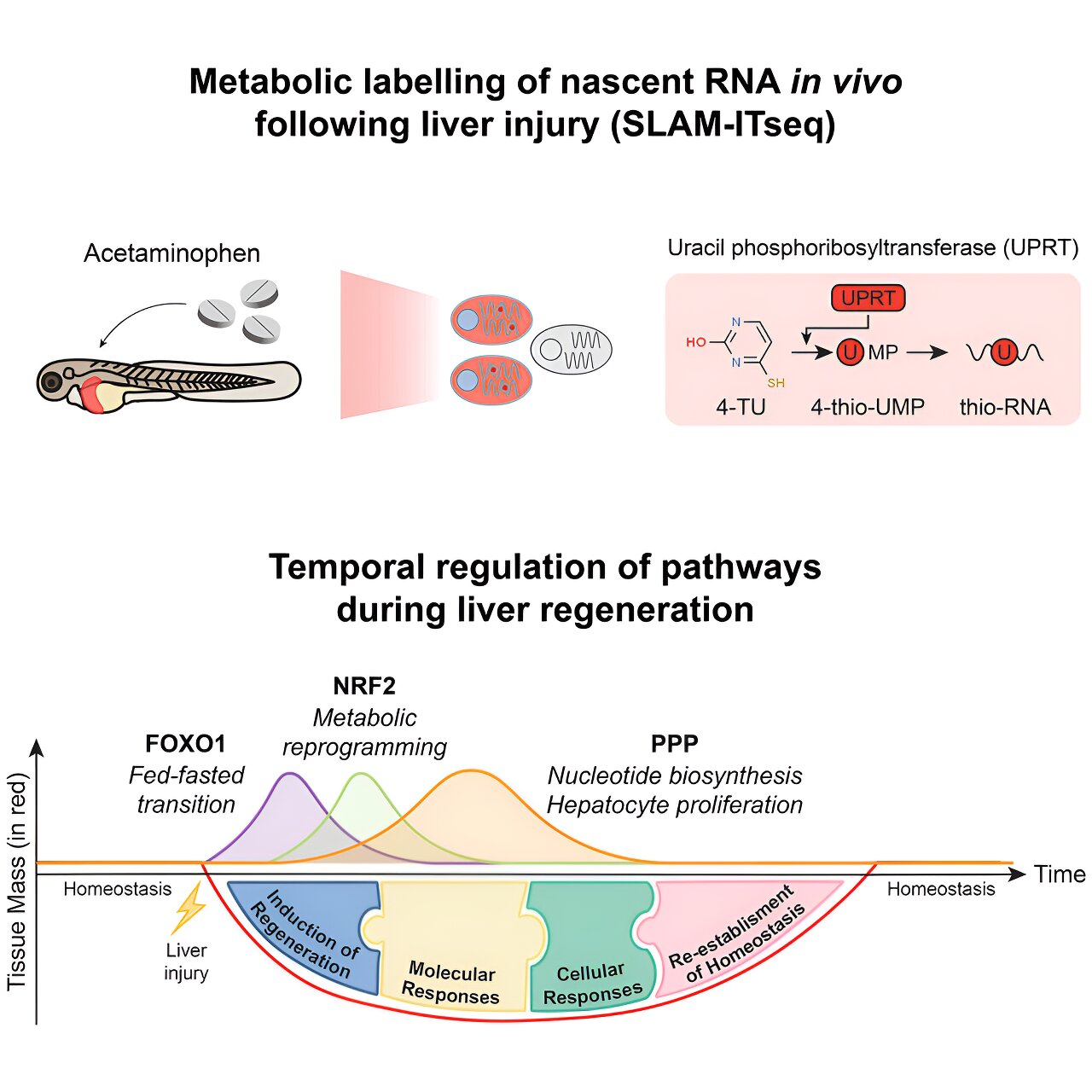
- Increased alcohol consumption as a coping mechanism for stress and anxiety
- Reduced access to healthcare due to job loss and financial constraints
- Deterioration of overall health due to poor nutrition and reduced physical activity
- Delayed medical treatment for early signs of liver disease
- Increased prevalence of mental health issues, which may exacerbate substance abuse
While the study cannot definitively prove a causal relationship between the recession and increased liver disease deaths, the correlation is significant enough to warrant further investigation and targeted interventions.
Geographic Disparities in Liver Disease Mortality
The rise in liver disease deaths has not been uniform across the United States. Certain regions have experienced more rapid increases than others, highlighting the need for targeted interventions and resource allocation. Which states have seen the most significant increases in cirrhosis deaths?
- Kentucky: Nearly 7% increase
- New Mexico: 6% increase
- Arkansas: Nearly 6% increase
Conversely, Maryland was the only state to report a significant decrease in cirrhosis deaths, with a reduction of about 1%. These geographic disparities may be attributed to various factors, including:
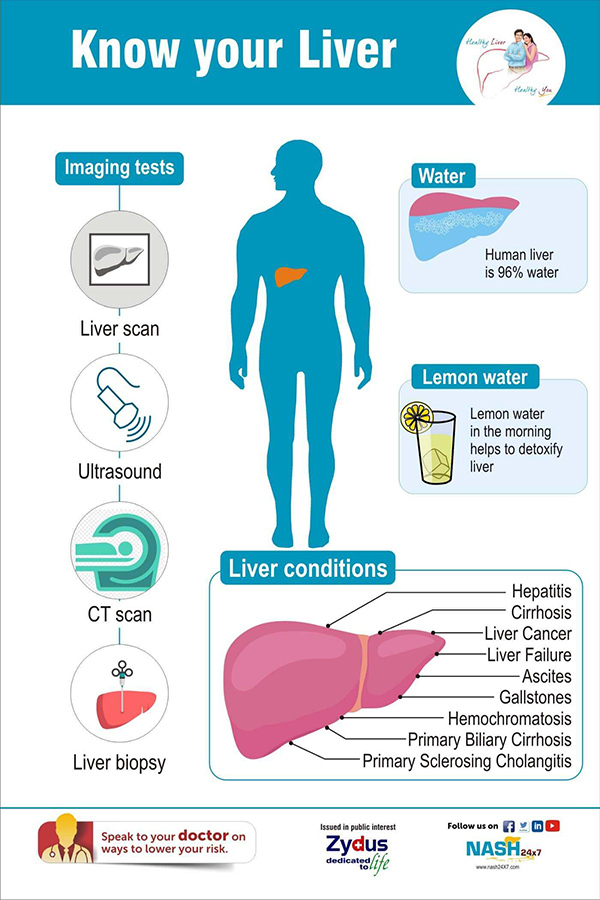
- Differences in alcohol consumption patterns and cultural attitudes towards drinking
- Varying prevalence of obesity and metabolic syndrome
- Disparities in access to healthcare and preventive services
- Socioeconomic factors and unemployment rates
- State-level policies regarding alcohol regulation and public health initiatives
Understanding these regional differences is crucial for developing targeted interventions and allocating resources effectively to combat the rise in liver disease deaths across the country.
The Role of Obesity and Non-Alcoholic Fatty Liver Disease
While alcohol-related liver disease has garnered significant attention, particularly among younger adults, the impact of obesity and non-alcoholic fatty liver disease (NAFLD) on liver-related mortality cannot be overlooked. How does obesity contribute to the development of liver disease? The connection between excess body weight and liver health is multifaceted:
- Accumulation of fat in liver cells, leading to inflammation and damage
- Insulin resistance, which can promote fat accumulation in the liver
- Increased production of inflammatory substances in adipose tissue
- Alterations in gut microbiota, potentially leading to liver inflammation
- Increased risk of developing type 2 diabetes, a known risk factor for liver disease
The obesity epidemic in the United States has contributed significantly to the rise in NAFLD cases, which can progress to non-alcoholic steatohepatitis (NASH), cirrhosis, and liver cancer. Addressing this aspect of the liver disease crisis requires a multifaceted approach that includes promoting healthy lifestyles, improving dietary habits, and increasing physical activity across all age groups.

Prevention Strategies and Early Intervention
Given the significant increase in liver disease mortality, prevention and early intervention strategies are crucial for reversing this troubling trend. What steps can individuals and healthcare providers take to reduce the risk of liver disease and improve outcomes for those already affected?
Lifestyle Modifications
- Limiting alcohol consumption or abstaining completely
- Maintaining a healthy weight through balanced diet and regular exercise
- Avoiding high-risk behaviors that can lead to hepatitis infections
- Managing underlying conditions such as diabetes and high cholesterol
- Reducing consumption of processed foods and sugary beverages
Medical Interventions
- Regular liver function tests and screenings for at-risk individuals
- Vaccination against hepatitis A and B
- Early treatment of viral hepatitis infections
- Management of underlying conditions that contribute to liver disease
- Referral to specialists for advanced liver disease management
Early detection and intervention are key to improving outcomes for individuals with liver disease. In many cases, lifestyle changes and appropriate medical management can halt or even reverse the progression of liver damage, particularly in the early stages of conditions like fatty liver disease and alcohol-related liver disease.

The Need for Comprehensive Public Health Initiatives
Addressing the rising tide of liver disease deaths requires a coordinated effort from healthcare providers, policymakers, and public health officials. What strategies can be implemented at a societal level to combat this growing crisis?
- Increased funding for liver disease research and treatment
- Public awareness campaigns about the risks of excessive alcohol consumption
- Implementation of policies to reduce alcohol availability and promote responsible drinking
- Improved access to healthcare services, particularly in underserved communities
- Integration of liver health screenings into routine primary care
- School-based education programs on liver health and the risks of alcohol abuse
- Workplace wellness initiatives that promote healthy lifestyles
- Support for mental health services to address underlying factors contributing to substance abuse
By implementing a comprehensive approach that addresses both individual risk factors and societal contributors to liver disease, it may be possible to reverse the alarming trend of increasing liver-related deaths in the United States.

The rise in liver disease mortality represents a significant public health challenge that requires immediate attention and concerted action. By understanding the underlying causes, identifying at-risk populations, and implementing effective prevention and treatment strategies, it is possible to reduce the burden of liver disease and improve health outcomes for millions of Americans. As research continues to shed light on this complex issue, it is crucial that healthcare providers, policymakers, and individuals work together to promote liver health and combat the factors contributing to this troubling trend.
U.S. Deaths From Liver Disease Rising Rapidly
By Steven Reinberg
HealthDay Reporter
THURSDAY, July 19, 2018 (HealthDay News) — The Great Recession continues to take a grim toll: Since 2009, a growing number of Americans have died from liver disease and liver cancer.
The increase among 25- to 34-year-olds is especially troubling because the deaths are due to cirrhosis, a disease caused by excessive drinking, the authors of a new study said. The researchers suspect the economic downturn in 2008 prompted people to comfort themselves with alcohol.
“These are deaths of despair,” said lead researcher Dr. Elliot Tapper, an assistant professor of gastroenterology at the University of Michigan.
It’s similar to overdose deaths from the opioid epidemic. In both cases, people are trying to relieve the emotional pain they feel, Tapper said.
He cautioned, however, that because this is an observational study, it cannot prove cause and effect.
Cirrhosis scars the liver and causes damage that can lead to deadly conditions such as liver cancer and liver failure.
The most common causes of cirrhosis are drinking too much over many years, hepatitis C or a build-up of excess fat in the liver, known as fatty liver disease, the study authors noted.
While young people are dying from alcohol-related cirrhosis, older people are dying from liver cancer and non-alcoholic fatty liver disease, Tapper explained.
The conditions affecting older people are most likely due to the obesity epidemic, he suggested. In many cases, liver disease can be prevented by living a healthy lifestyle.
If cirrhosis is caught early, the liver will repair itself, Tapper said, and losing weight can reverse fatty liver disease.
Dr. Raymond Chung is director of the Hepatology and Liver Center at Massachusetts General Hospital, in Boston.
He said the increased deaths may stem from several factors, including complications of the hepatitis C epidemic, as well as the high frequency of fatty liver disease in the U.S. population.
The deaths of very young adults are striking, added Chung, who is also on the governing board of the American Association for the Study of Liver Diseases.
“We do not yet understand why this is happening in this age group, and further study is required to determine whether this is due to sheer quantity or type of alcohol consumed, genetic factors or the presence of other forms of liver injury,” Chung said.
For the study, Tapper’s team reviewed death certificate data for nearly 600,000 U.S. adults.
Between 1999 and 2016, deaths from cirrhosis increased by 65 percent (from about 20,600 in 1999 to nearly 34,200 in 2016). Deaths from liver cancer doubled (from more than 5,100 to nearly 11,100) during the same time period.
Compared to women, men had nearly twice as many deaths from cirrhosis and almost four times as many from liver cancer, the study authors said.
From 2009 to 2016, people aged 25 to 34 had the highest annual increase in cirrhosis deaths — nearly 11 percent. Deaths from liver cancer among those under 55, meanwhile, decreased, but rose among people over 55, Tapper said.
The greatest increase in deaths from cirrhosis was seen among whites, Native Americans and Hispanics, the researchers said.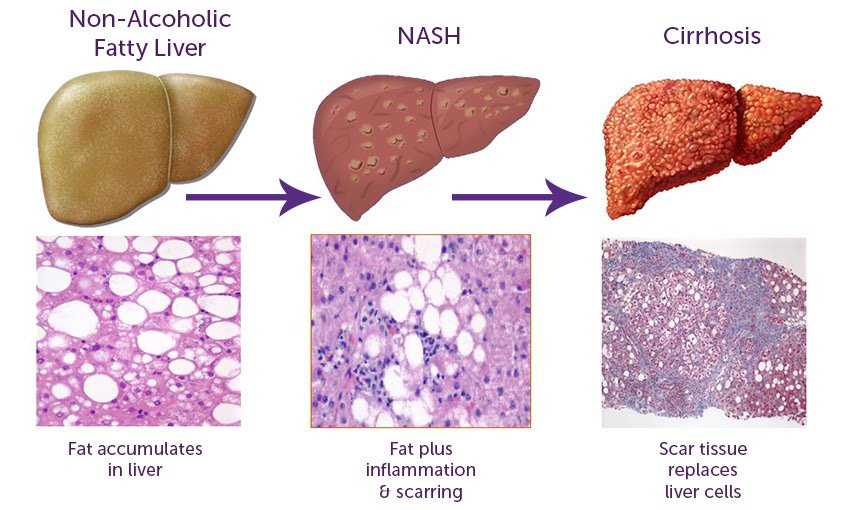
Deaths from cirrhosis and liver cancer rose fastest in western and southern states. For example, deaths in Kentucky rose nearly 7 percent, in New Mexico 6 percent and in Arkansas nearly 6 percent.
Only one state, Maryland, saw a significant decrease in cirrhosis deaths, of about 1 percent, the findings showed.
According to Dr. David Bernstein, chief of hepatology at Northwell Health in Manhasset, N.Y., “This study highlights the silent epidemic of advanced liver disease in the United States, which largely remains unrecognized and unacknowledged by the collective medical leadership.”
Bernstein added that “the paper should be a wake-up call to the medical community — and especially to health care policymakers and administrators — that we need to focus on disease prevention and risk-factor modification, while at the same time shifting resources to address the already growing burden of cirrhosis and liver cancer.”
The report was published online July 18 in the BMJ.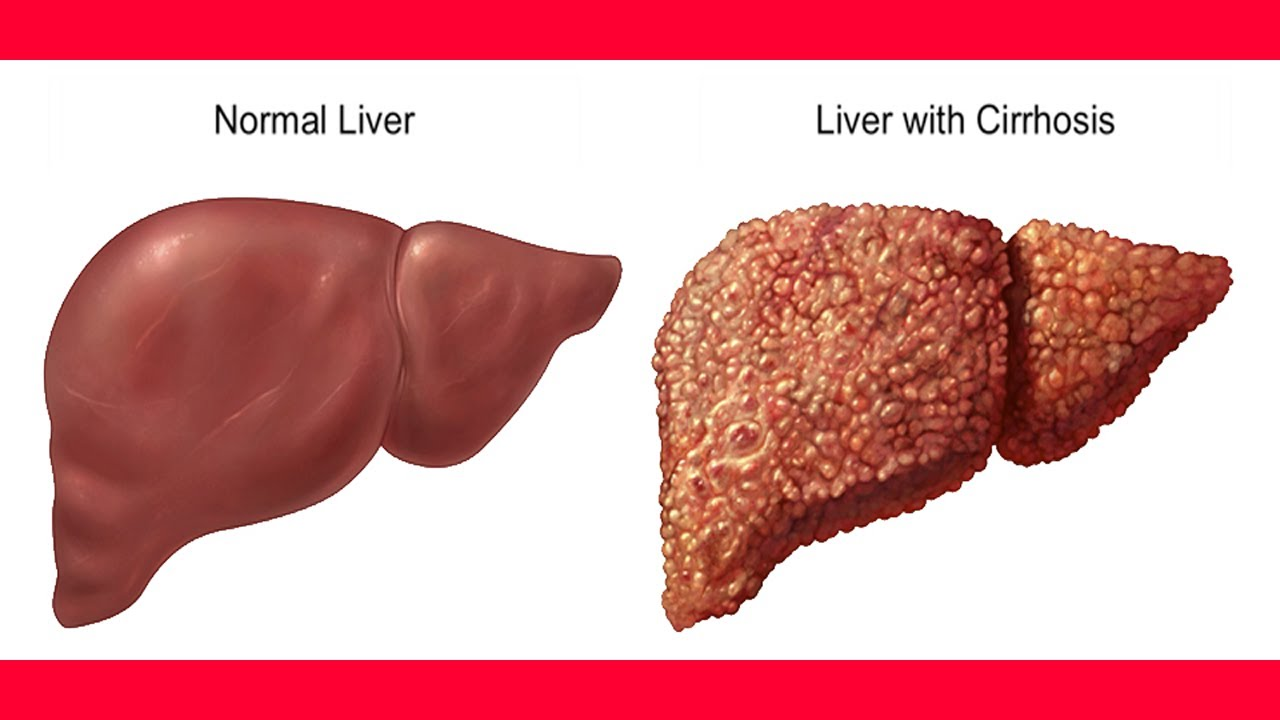
A report from the U.S. Centers for Disease Control and Prevention released earlier this week echoed these findings.
Between 2000 and 2016, liver cancer deaths were up 43 percent for men and 40 percent for women aged 25 and older, the CDC reported.
Why Are More Young Adults Dying Of Alcohol-Related Liver Disease? : Shots
Young people who drink heavily may be at risk of fatal liver disease.
South_agency/Getty Images
hide caption
toggle caption
South_agency/Getty Images
Young people who drink heavily may be at risk of fatal liver disease.
South_agency/Getty Images
Dr. Elliot Tapper has treated a lot of patients, but this one stood out.
Elliot Tapper has treated a lot of patients, but this one stood out.
“His whole body was yellow,” Tapper remembers. “He could hardly move. It was difficult for him to breathe, and he wasn’t eating anything.”
The patient was suffering from chronic liver disease. After years of alcohol use, his liver had stopped filtering his blood. Bilirubin, a yellowish waste compound, was building up in his body and changing his skin color.
Disturbing to Tapper, the man was only in his mid-30s – much younger than most liver disease patients.
Tapper, a liver specialist and assistant professor of medicine at the University of Michigan Medical School, tried to get the patient to stop drinking.
“We had long, tearful conversations,” Tapper says, “but he continued to struggle with alcohol addiction.” Since then, the young man’s condition has continued to deteriorate and Tapper is not optimistic about his chances of survival.
It’s patient stories like this one that led Tapper to research liver disease in young people.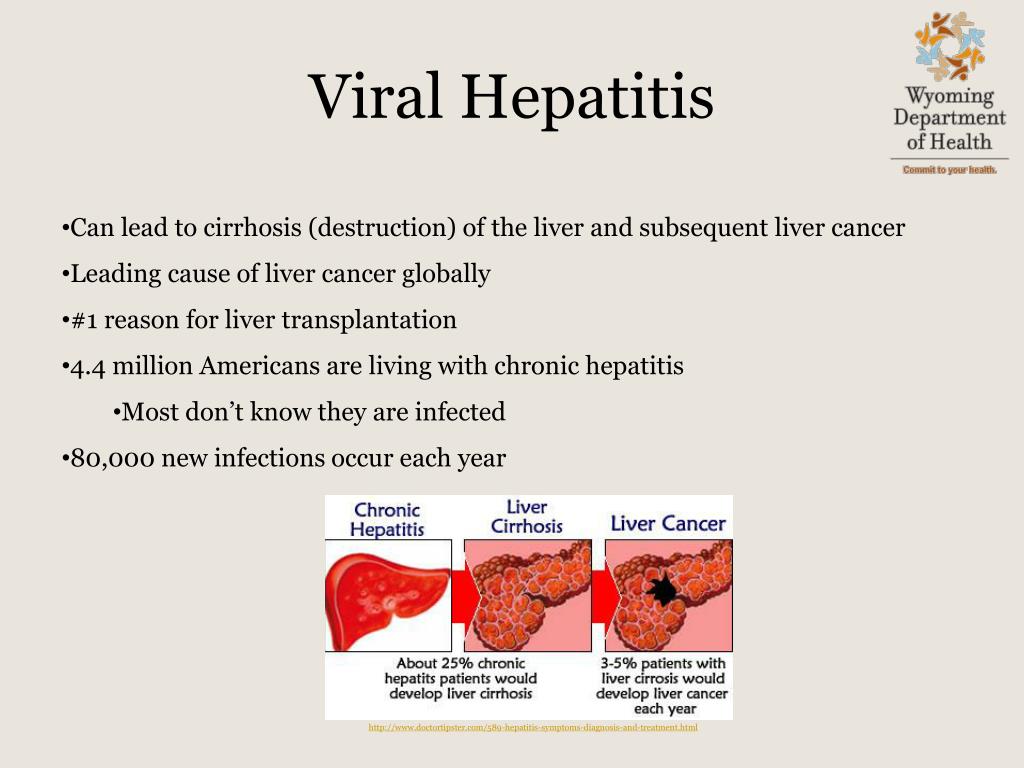 According to a study published Wednesday in BMJ by Tapper and a colleague, fatal liver disease has risen, and young people have been hit the hardest.
According to a study published Wednesday in BMJ by Tapper and a colleague, fatal liver disease has risen, and young people have been hit the hardest.
The study examined the number of deaths resulting from cirrhosis, or scarring of the liver, as well as liver cancer. Data came from the Centers for Disease Control and Prevention and covered the period from 1999 to 2016.
The analysis revealed that deaths from liver-related illnesses have increased dramatically, and mortality in young people rose the fastest. Although these illnesses can be caused by several things including obesity and hepatitis C infection, the rise among young Americans was caused by alcohol consumption. The number of 25- to 34-year-olds who died annually from alcohol-related liver disease nearly tripled between 1999 and 2016, from 259 in 1999 to 767 in 2016, an average annual increase of around 10 percent.
“What’s happening with young people is dismaying to say the least,” says Tapper.
Certain ethnic groups, like whites and Native Americans, also saw large increases in liver-related deaths in all age groups, while Asian-Americans saw decreases.
The rise in alcohol-related deaths overlaps with rising rates of binge drinking from 2002 to 2012 observed across much of the U.S.
The authors noted a sharp spike in mortality starting in 2009. The reason for the spike is unclear, but Dr. Neehar Parikh, a liver specialist at the University of Michigan Medical School and Tapper’s co-author, has a theory.
“It correlates with the global financial crisis,” Parikh says. “We hypothesize that there may be a loss of opportunity, and the psychological burden that comes with that may have driven some of those patients to abusive drinking.”
The increase among younger Americans is particularly troubling, because it kills people in the prime of their life.
“Each young patient that dies is a tragedy,” says Parikh. “It’s years of life lost.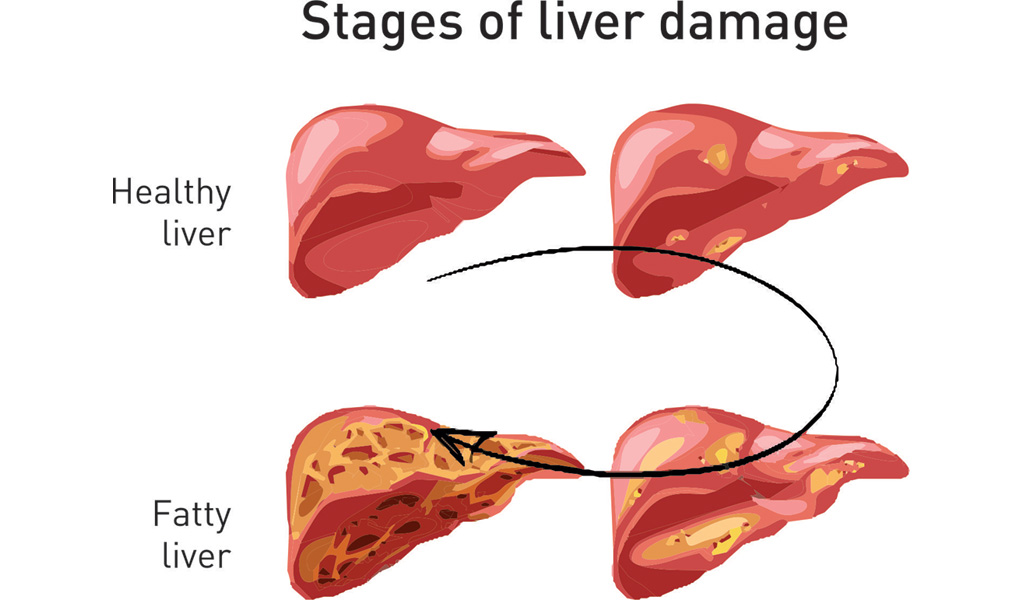 “
“
The study is the latest to confirm that liver-related illnesses are becoming increasingly prevalent. A report published Tuesday by the CDC shows that the age-adjusted death rate from liver cancer has increased 43 percent since 2000. And a recent study of veterans found that cirrhosis cases nearly doubled between 2001 and 2013.
But Dr. Vijay Shah, who heads the Division of Gastroenterology and Hepatology at the Mayo Clinic and was not involved with this research, says that the study’s emphasis on young Americans is new.
“Alcohol-related liver cirrhosis used to be considered a disease that would happen after 30 years of heavy alcohol consumption,” Shah says. “But this study is showing that these problems are actually occurring in individuals in their 20s and 30s.”
“There has been a shift in the kind of patient we’re seeing,” agrees Dr. Sumeet Asrani, a liver specialist practicing in Dallas who did not contribute to the study. “It fits with what we see in practice. We’re seeing younger and younger patients with alcoholic liver disease.”
“It fits with what we see in practice. We’re seeing younger and younger patients with alcoholic liver disease.”
Despite the recent increase, cirrhosis remains a relatively minor cause of death for young Americans, accounting for only 1.4 percent of total deaths in the 25-34 age range. But it’s much more significant for young Native Americans, accounting for 6.3 percent of deaths.
Tapper thinks the problem is only going to get worse. Some conditions that cause liver trouble, like hepatitis C, have been falling. But other risk factors, including obesity, are on the rise. Alcohol consumption and obesity could interact to worsen liver disease, Tapper says.
Tapper says he thinks that policy could play a role in addressing the problem. For instance, strategic taxation of alcoholic beverages could deter consumption, just as raising the taxes on cigarettes has been shown to reduce smoking. He cites the example of Scotland, which recently set minimum prices for units of alcohol to deter binge drinking. He also points to public health interventions, such as counseling, that help people quit drinking.
He also points to public health interventions, such as counseling, that help people quit drinking.
The good news is that liver disease is often reversible. Many patients can recover if they stop drinking soon enough.
“I’ve had patients who came to me in a wheelchair,” Tapper says. “Three months later, they’re shoveling snow and their lab tests are normal. It’s always because they made that choice to stop drinking.”
Paul Chisholm is an intern with NPR’s Science desk.
Liver Failure – End Stage Liver Disease
When the liver is failing, time is of the essence. At the Center for Liver Diseases at the University of Chicago Medicine, we have a team of highly experienced specialists dedicated to helping adults with liver failure. When liver failure is suspected, we work together to recommend the best approach for you or your loved one.
Whenever there is a treatment for the cause of your liver failure, we will start that treatment immediately. However, in many cases, the definitive treatment for liver failure is a liver transplant. Unlike kidney failure where dialysis can be used to do the function of the kidney, there are no machines available yet to replace the work of the liver.
However, in many cases, the definitive treatment for liver failure is a liver transplant. Unlike kidney failure where dialysis can be used to do the function of the kidney, there are no machines available yet to replace the work of the liver.
To determine whether you or your loved one is a candidate for a transplant, we have a fast-tracked, comprehensive evaluation protocol for patients in liver failure. Every member of our team is alerted to the urgency of your situation, and we rapidly conduct all the necessary tests and evaluations, which can be completed in two to three days in the inpatient setting. Our patients who are candidates can get on the waitlist faster and, therefore, receive an organ sooner.
Learn more about the liver transplant process.
What is liver failure?
Liver failure means your liver is shutting down or has shut down. The liver handles a number of important functions in the body, including getting rid of harmful substances, producing proteins that allow for adequate clotting, and making bile, which is needed to digest food.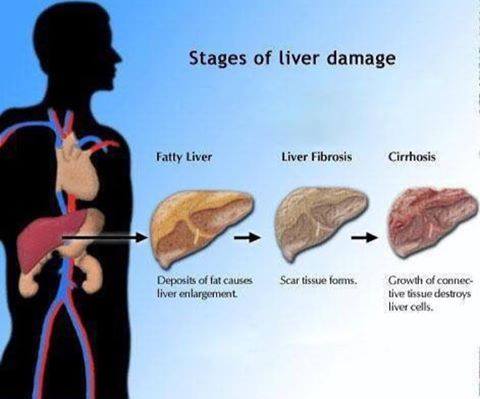
When the liver is failing, it can no longer complete these vital tasks. As a result, the body does not work properly. As liver failure progresses, you may experience some or all of the following symptoms:
- Jaundice, or yellow eyes and skin
- Confusion or other mental difficulties
- Swelling in the belly, arms or legs
- Severe fatigue
- A tendency to bleed easily
What is the difference between acute and chronic liver failure?
Liver failure can develop slowly or rapidly, depending on the cause and the condition of the liver.
Chronic liver failure: The most common type of liver failure is chronic, which can take months or years to develop. Chronic liver failure is a slow decline in liver function that occurs alongside cirrhosis, or severe scarring of the liver. Cirrhosis may be caused by excess alcohol intake, hepatitis, nonalcoholic fatty liver disease, bile duct diseases and various hereditary conditions.
At UChicago Medicine, our liver disease team helps hundreds of patients a year with cirrhosis. We focus on controlling or slowing the progression of cirrhosis with lifestyle changes, medicines and other treatments.
Over time, however, cirrhosis can slowly lead to a decline in liver function and, ultimately, liver failure. We perform periodic testing to monitor the health of your liver so we will know if and when your liver begins to fail. Once cirrhosis progresses to liver failure, the definitive treatment is a liver transplant.
Acute liver failure: When liver failure develops rapidly, typically over days to a few weeks, it is known as acute liver failure. This form of liver failure is rare and often happens in people who have never had previous liver problems. Causes of acute liver failure include:
- Taking too much acetaminophen or combining acetaminophen with alcohol use
- Hepatitis (A, B and autoimmune)
- Ingesting toxins, such as poisonous mushrooms
- Unexpected liver toxicity from medications
- Certain diseases, including Budd-Chiari syndrome and Wilson’s disease
Acute liver failure is considered a medical emergency. Patients suffering from acute liver failure are monitored in our state-of-the-art intensive care units. Treatment will depend on the cause of your underlying liver failure. Medications may help treat hepatitis, acetaminophen overdoses, poisonings and other causes. If treatment is not effective, you or your loved one will be evaluated for a possible liver transplant.
Patients suffering from acute liver failure are monitored in our state-of-the-art intensive care units. Treatment will depend on the cause of your underlying liver failure. Medications may help treat hepatitis, acetaminophen overdoses, poisonings and other causes. If treatment is not effective, you or your loved one will be evaluated for a possible liver transplant.
Acute-on-chronic liver failure: Sometimes people with chronic liver failure who are clinically stable suddenly develop rapid progression of the liver failure. There are various causes for the rapid worsening of the liver function, including an infection, drinking some alcohol despite having a cirrhotic liver or ingesting medications that may unexpectedly harm the liver.
What treatments are available for liver failure?
Patients with acute-on-chronic liver failure may see their livers fail over weeks to months, compared to months to years as is typical in chronic liver failure.
As with acute liver failure, we focus first on treating the underlying cause of sudden liver failure before considering a possible liver transplant.
In many cases, the only treatment for liver failure is a liver transplant. However, liver failure is sometimes brought on by an acute or hereditary cause that can be treated. For instance, when liver failure is caused by ingesting too much acetaminophen (an over-the-counter pain reliever), we will use medicine to counteract the effects of this common drug to reduce liver damage. When liver failure results from a hereditary copper-overload disease, we will use medications to remove the copper out of the body. Or when liver failure is precipitated by an infection in patients with cirrhosis, we will use antibacterial medicines to fight the infection to, hopefully, return the liver to its previous functional state.
An innovative liver dialysis machine to help treat liver failure
The Molecular Adsorbent Recirculating System (MARS) is a liver dialysis machine used in the treatment of liver failure to enable native liver regeneration. It removes protein-bound and water-soluble toxins from the blood and reduces the amounts of toxins that reach the brain.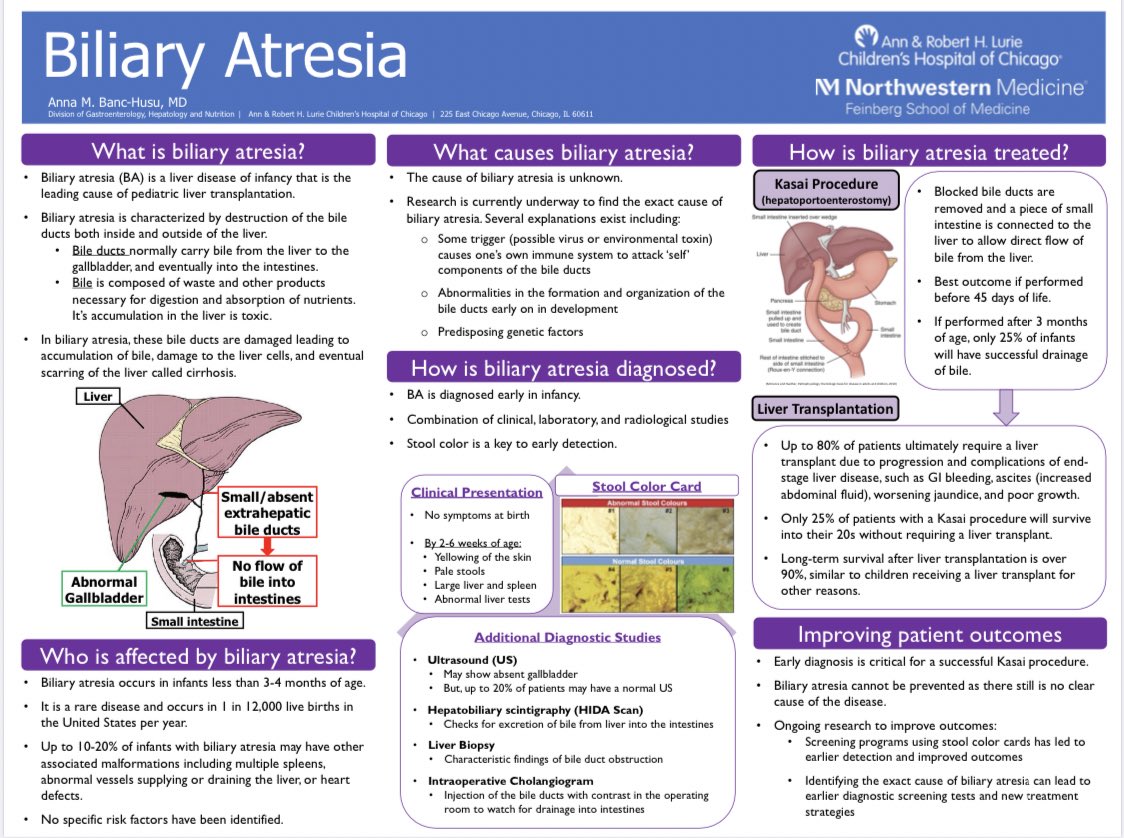 The MARS system helps prevent irreversible organ failure and improves liver regeneration and recovery. UChicago Medicine is the only center in the Chicagoland area to offer this complex medical therapy.
The MARS system helps prevent irreversible organ failure and improves liver regeneration and recovery. UChicago Medicine is the only center in the Chicagoland area to offer this complex medical therapy.
Frequently Asked Questions about Liver Failure
Early on, liver damage may not cause any symptoms. A failing liver is usually detected with blood tests. Over time, you may notice jaundice and other symptoms highlighted above.
Liver failure is when the liver has shut down or is shutting down. Cirrhosis is a late stage of liver disease where the liver is severely scarred but may still be able to perform its function to support life. When the liver is no longer able to perform its work adequately, its goes into liver failure. Most patients who develop chronic liver failure have underlying cirrhosis.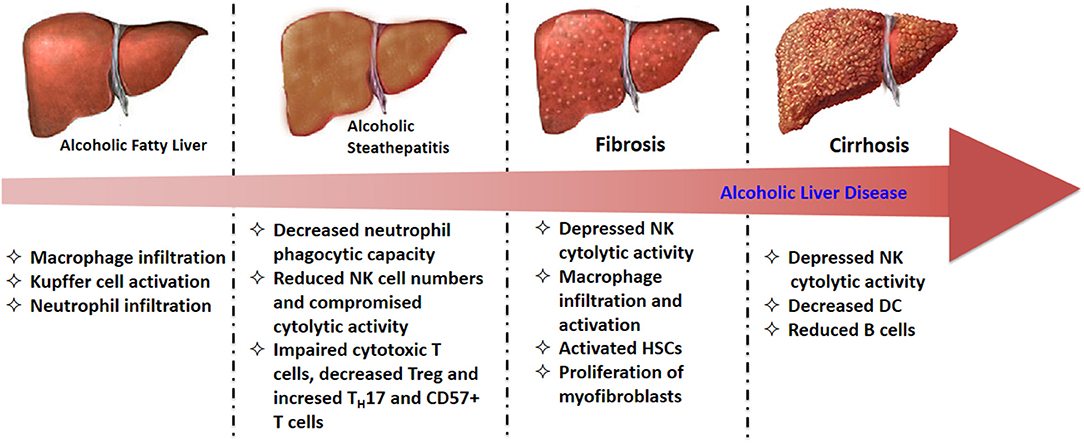 Liver disease can go through these stages:
Liver disease can go through these stages:
- Inflammation: Increased activity of the immune system in the liver, leading to swelling of the liver
- Fibrosis: Early scarring that can follow inflammation in the liver
- Cirrhosis: Severe scarring of the liver that accumulates with prolonged inflammation and typically cannot be reversed
- End-stage liver disease: Little to no liver function (often called liver failure)
A liver with no cirrhosis has a high capacity to regenerate itself. If patients follow treatment recommendations, their livers can regain normal function. Treatment often involves adopting healthy behaviors, such as reducing alcohol intake for people with alcoholic liver disease or weight reduction for those with nonalcoholic fatty liver disease that is precipitated by excess weight.
However, once cirrhosis develops, there’s little chance that the liver can repair itself.
One of the ways we determine if your liver is failing is through blood tests, which helps us determine your MELD score, or Model for End-Stage Liver Disease score. We look at four lab results:
- Bilirubin, which tells how well your liver is expelling bile
- Creatinine, which reflects the kidney function, an organ that is affected by liver failure
- INR or prothrombin time, which measures the function of blood-clotting factors produced by the liver
- Sodium, which is an electrolye in the blood that is affected by advanced liver disease
Your MELD score will range from 6 to >40. The worse your liver function, the higher your MELD score will be, and the higher your risk of death. The MELD score is also used to determine a person’s priority on the transplant list, with sicker patients receiving higher priority. The MELD score can be calculated using a programmed equation.
The MELD score can be calculated using a programmed equation.
World-Renowned Liver Disease Specialists
With access to leading therapies and state-of-the-art technologies, our liver disease specialists work together to provide personalized care for each patient.
Find a Liver Disease Specialist
Rapid rise in deaths from liver disease in the US over the last decade
Peer-reviewed? Yes
Type of evidence: Observational
Subjects: People
Greatest increase seen in young people due to alcohol, say researchers
There has been a rapid rise in deaths due to liver disease in the US since 2009, especially in young people, driven predominantly by alcohol use, say researchers in The BMJ today.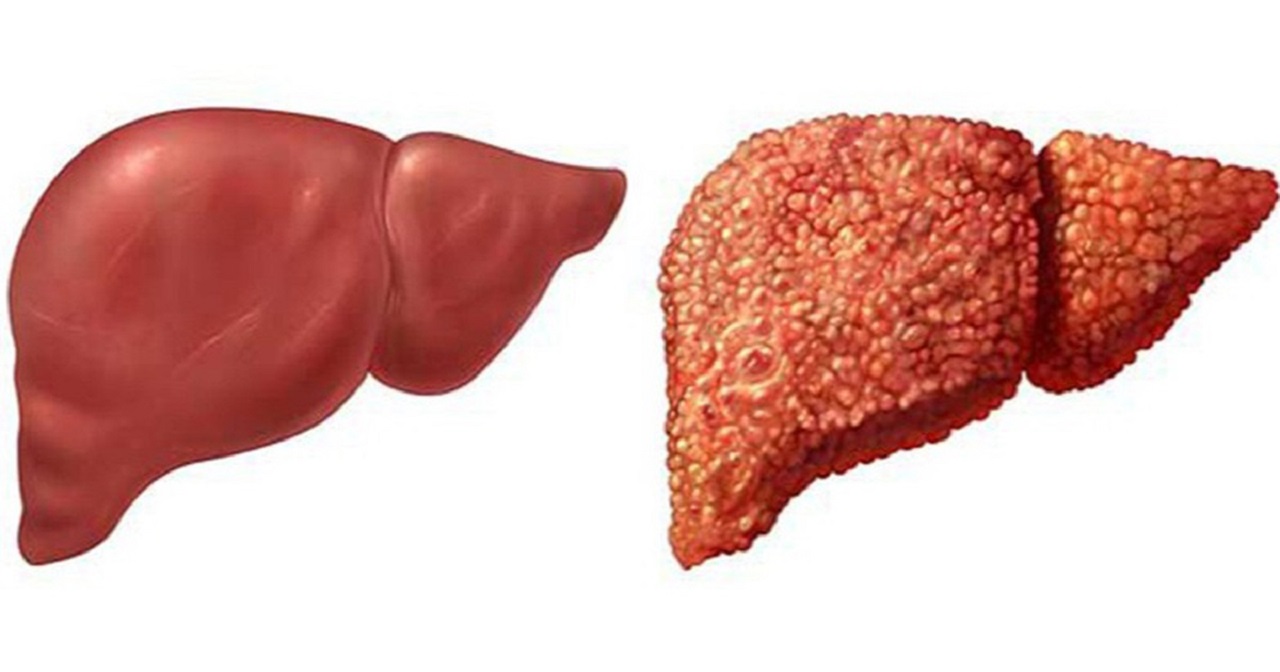
They also point out that the worsening trends began after 2008, a year marked by the global financial crisis and a subsequent economic recession in the US, which may explain some of the results.
Cirrhosis is scarring of the liver caused by long-term damage, which can lead to fatal conditions such as liver cancer and liver failure. The most common causes are drinking too much alcohol over many years, being infected with hepatitis C, or having a build-up of excess fat in the liver (known as non-alcoholic fatty liver disease).
Cirrhosis and liver cancer carry personal and financial burdens for patients, their families, and society, so prevention and early treatment is cost-effective. However, data to guide allocation of resources and preventive efforts are limited, particularly in different groups or regions of the country.
So Elliot Tapper and Neehar Parikh at University of Michigan and VA Ann Arbor Healthcare System set out to investigate deaths relating to liver disease among US adults.
They examined death certificate data for nearly 600,000 adults from the Vital Statistics Cooperative and population data from the US Census Bureau between 1999 and 2016.
They looked at trends in deaths related to cirrhosis and liver cancer based on age group, sex, race and place of residence. They also looked at trends due to specific complications of cirrhosis, causes other than cirrhosis, and alcohol use disorder.
After taking account of several factors that could have influenced the results, the researchers found that deaths due to cirrhosis increased by 65% (from 20,661 in 1999 to 34,174 in 2016) and deaths due to liver cancer doubled (from 5,112 in 1999 to 11,073 in 2016).
Men had twice as many cirrhosis related deaths and four times as many liver cancer related deaths than women.
During 2009-16, people aged 25-34 experienced the highest average annual increase in cirrhosis deaths (10.5%), driven predominantly by alcohol related liver disease. In contrast, liver cancer deaths decreased in younger people (under 55 years) and continued to increase in those over 55 years old.
In contrast, liver cancer deaths decreased in younger people (under 55 years) and continued to increase in those over 55 years old.
Over the same period, white Americans, Native Americans, and Hispanic Americans experienced the greatest increase in deaths from cirrhosis.
States in the Western and Southern US experienced the fastest rise in cirrhosis and liver cancer related deaths: Kentucky 6.8%, New Mexico 6% and Arkansas 5.7%. Only one state in the north east region, Maryland, experienced a significant annual decrease in cirrhosis related deaths (-1.2%).
The authors suggest that the 2008 global financial crisis and the subsequent economic recession in the US may have played a part in their findings. For example, unemployment is linked with alcohol abuse in young men, but not women, which may explain why death rates were highest for young men.
This is an observational study, so no firm conclusions can be drawn about cause and effect, and the researchers outline some study limitations. For example, death certificate data may be inaccurate.
For example, death certificate data may be inaccurate.
Nevertheless, they say their study shows that specific demographic groups and states are disproportionately affected by trends in cirrhosis and liver cancer related deaths and more detailed data are required.
“These data underscore gaps in care and opportunities for prevention” they conclude.
[Ends]
Research: Cirrhosis and liver cancer mortality in the United States 1999-2016: observational study
Journal: The BMJ
Link to Academy of Medical Sciences press release labelling system guidance:
https://press.psprings.co.uk/
Long term follow-up and liver-related death rate in patients with non-alcoholic and alcoholic related fatty liver disease | BMC Gastroenterology
Few studies have determined the natural history of biopsy-proven fatty liver disease and compared the long-term prognosis of these two major groups of fatty liver disease due to alcoholic and non-alcoholic fatty liver disease.
Our study has several methodological strengths. First, all patients had biopsy proven fatty liver disease and histology was re-evaluated based on validated scores. We believe we have included the vast majority of patients with biopsy-proven fatty liver disease in the whole population of Iceland during this period as at least 95% of the population lives in the catchment area of the National University Hospital. The fact that all the patients underwent a liver biopsy is also a weakness, especially when evaluating disease outcome. Previous studies have shown that NAFLD patients diagnosed with liver biopsy have a worse prognosis compared with patients diagnosed with ultrasonography. Therefore, studying patients recruited from the pathology registry involves a selection bias. It must be stressed that the indications for the liver biopsy was not always clear, although most cases were because of elevated liver function tests and/or hepatomegaly or suspected alcoholic liver disease, and this in turn can give a selection bias. Also the indication for biopsy in NAFLD and AFLD may differ between conditions and between practitioners and might explain some of the differences in disease outcome.
Also the indication for biopsy in NAFLD and AFLD may differ between conditions and between practitioners and might explain some of the differences in disease outcome.
The main limitation of the study was its retrospective design and data was not systematically registrered and was therefore sometimes missing or unavailable. In addition the search for the code M-50080 (fatty liver) is limiting in itself as the more serious steatosis with fibrosis and even cirrhosis might be coded as something else than just fatty liver. Since this was a retrospective study on liver biopsies it is not possible to standardize the size of the needle biopsies. Therefore the size is very variable and the range can be considerable, but should be similar to the standards observed in pathology departments in general. Samples less than 2 mm in diameter would have been excluded from the study, but no such samples came into the study.
The slides used for pathological estimation were the original slides and recuts or restaining of slides was not done except for a few exceptional cases where the original slides were unavailable or when a Masson-Trichrome stain had not been performed originally. Occationally the colours of the slides had faided somewhat. This however we do not anticipate having significant effect on the results, especially since ballooning degeneration increases cell size and this is not greatly affected by fading colours.
Occationally the colours of the slides had faided somewhat. This however we do not anticipate having significant effect on the results, especially since ballooning degeneration increases cell size and this is not greatly affected by fading colours.
Another limitation is the small number of hard endpoints with only four patients in the NAFLD group who developed cirrhosis over the follow-up period. There is also a potential uncertainty in the non-histological diagnosis of cirrhosis which must be taken into consideration when reviewing the results.
The information on ASH should be interpreted with caution as NAFLD activity score has to our knowledge not yet been validated in AFLD, but we chose to use it for comparison as the histolopathological development is similar in the two conditions and there is no difference morphologically between NAFLD and AFLD.
One of the main findings in this study was that patients with fatty liver disease showed a markedly higher risk of developing liver-related death compared to the general population. Although significantly higher in the AFLD group liver-related death in the NAFLD group was 7% of all deaths. These findings are in contrast with liver-related death rate in Iceland [13] which was a mean of 0.1% in the general population during the study period. As in other studies it is a challenge to classify patients into non-alcoholic and alcoholic group. We tried to minimize the misclassification by regrouping those without a known alcohol etiology if the patients were found to have an alcoholic related diagnosis later as for instance alcohol pancreatitis and alcohol dependence. In addition all patients were linked to the database for the National Centre of Addiction Medicine in Iceland.
Although significantly higher in the AFLD group liver-related death in the NAFLD group was 7% of all deaths. These findings are in contrast with liver-related death rate in Iceland [13] which was a mean of 0.1% in the general population during the study period. As in other studies it is a challenge to classify patients into non-alcoholic and alcoholic group. We tried to minimize the misclassification by regrouping those without a known alcohol etiology if the patients were found to have an alcoholic related diagnosis later as for instance alcohol pancreatitis and alcohol dependence. In addition all patients were linked to the database for the National Centre of Addiction Medicine in Iceland.
Liver-related morbidity and mortality
Our results show that patients with NAFLD had a rather benign course in terms of liver-related morbidity and mortality. Only 7% developed cirrhosis after a mean of 13 years of follow-up which is similiar to what previous studies on the prognosis of NAFLD have shown [6, 7, 14–17]. A higher number of patients in the AFLD group developing cirrhosis (20%) after approximately 12 years of follow-up, is also in agreement with previous studies showing worse prognosis in patients with AFLD than NAFLD [8, 9, 18]. These studies have demonstrated that patients with alcoholic fatty liver disease have worse prognosis of their liver disease than patients with NAFLD [8, 9, 18]. In a study on prognosis and life expectancy in chronic liver disease the five year survival was 38% for the alcoholic group and 68% for the non-alcoholic group but only 87% of the patient underwent liver biopsy whereas the rest was diagnosed clinically or with ultrasound [18]. In another study of 7000 patients discharged with the diagnosis fatty liver the mortality was 5.4 fold amongst AFLD and 2.6 amongst NAFLD [19]. In the current study we found that the overall survival was worse in the AFLD group. Patients in the AFLD group had a higher liver-related mortality, but patients in the NAFLD group died more frequently from cardiovascular disease as already demonstrated in previous studies [6, 7, 14, 16].
A higher number of patients in the AFLD group developing cirrhosis (20%) after approximately 12 years of follow-up, is also in agreement with previous studies showing worse prognosis in patients with AFLD than NAFLD [8, 9, 18]. These studies have demonstrated that patients with alcoholic fatty liver disease have worse prognosis of their liver disease than patients with NAFLD [8, 9, 18]. In a study on prognosis and life expectancy in chronic liver disease the five year survival was 38% for the alcoholic group and 68% for the non-alcoholic group but only 87% of the patient underwent liver biopsy whereas the rest was diagnosed clinically or with ultrasound [18]. In another study of 7000 patients discharged with the diagnosis fatty liver the mortality was 5.4 fold amongst AFLD and 2.6 amongst NAFLD [19]. In the current study we found that the overall survival was worse in the AFLD group. Patients in the AFLD group had a higher liver-related mortality, but patients in the NAFLD group died more frequently from cardiovascular disease as already demonstrated in previous studies [6, 7, 14, 16].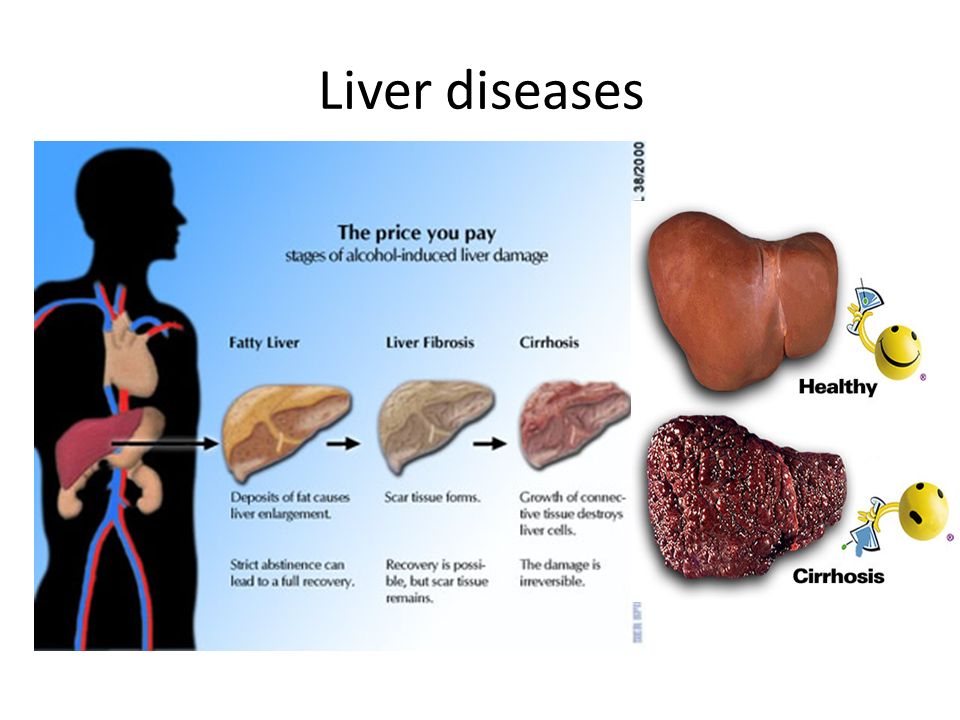
In the AFLD group the most common cause of death was liver-related (35%).
Other studies have shown that obesity in both NAFLD and AFLD predispose to the development of fatty liver and chronic liver disease [19, 20]. In Iceland, the prevalence of liver cirrhosis due to alcohol is very low, only 3.3/100.000 inhabitants which was 4 times lower than in Sweden [21]. In the current study 45% of the patients in the NAFLD group had a BMI ≥30 and somewhat surprisingly there was no significant difference in BMI between the NAFLD group and the AFLD group. The fact that patients with AFLD did not differ with respect to BMI and incidence of metabolic syndrome-related diseases might reflect a mixed AFLD/NAFLD etiology in the alcoholic group. In the Dionysos study, obesity among heavy drinkers, increased the risk for steatosis by twofold [19]. Moreover, no significant differences were evident concerning conditions associated with metabolic syndrome neither at baseline nor at follow-up, but we had expected a higher portion of diseases associated with metabolic syndrome in the NAFLD group. In a study from Denmark, a significantly higher BMI was seen in NAFLD than in AFLD patients. However, this might at least partly reflect the fact that their patients were recruited from an obesity research project [8] whereas our patients were unselected patients undergoing a liver biopsy.
In a study from Denmark, a significantly higher BMI was seen in NAFLD than in AFLD patients. However, this might at least partly reflect the fact that their patients were recruited from an obesity research project [8] whereas our patients were unselected patients undergoing a liver biopsy.
In the current study women were in the majority in the NAFLD group but the high proportion of women with fatty liver compared to men may reflect a higher disease burden in women. A recent study from the US also found a higher proportion of women in the NAFLD group [22] which is in line with our results. A significantly higher prevalence of cirrhosis in female AFLD patients was observed in a Danish study and time to cirrhosis was associated with female gender [10]. Population based studies have shown increased risk of women developing alcohol-induced cirrhosis [23–26].
Progression of NAFLD has been found to be slow and seems to depend a great deal on the initial fibrosis stage [8, 14]. Patients with simple fatty liver at baseline seem to have a good prognosis in terms of liver disease. In a Danish study of 109 patients diagnosed with pure non-alcoholic simple steatosis (without inflammation or significant fibrosis) only one of the patients developed cirrhosis [8]. In the current study more severe lobular inflammation was found in the AFLD group compared to the NAFLD group and a significantly higher number of patients in the AFLD group had steatohepatitis compared to the NAFLD group.
In a Danish study of 109 patients diagnosed with pure non-alcoholic simple steatosis (without inflammation or significant fibrosis) only one of the patients developed cirrhosis [8]. In the current study more severe lobular inflammation was found in the AFLD group compared to the NAFLD group and a significantly higher number of patients in the AFLD group had steatohepatitis compared to the NAFLD group.
In the total study cohort patients with more severe fibrosis at baseline showed a worse overall survival than patients with none or mild fibrosis at baseline. Based on this we were able to show an association in the total study cohort between the stage of fibrosis and the prognosis. However more NAFLD than AFLD patients had mild or no fibrosis at baseline. This is in agreement with results from a recent study showing that advanced fibrosis in the index liver biopsy was the most important predictor of the prognosis in these patients [27]. A recent Danish study showed that the cirrhosis risk was more than twice as high for the patients with steatohepatitis than for those with pure steatosis [26].
A Swedish cohort study of patients with biopsy-proven NAFLD and elevated liver tests showed that they had a similar survival compared to the Swedish population [7]. Interestingly the risk of death was increased in patients with non-alcoholic steatohepatitis [7].
A study from Minnesota, identified 420 patients with NAFLD by imaging or liver biopsy found liver-related complications to be the third most common cause of death among NAFLD patients [6]. This is similar to our results showing liver-related to be the third most common cause of death amongst the NAFLD group. However in the AFLD group liver-related death was the leading cause of death, followed by cardiovascular diseases and malignancy which is in accordance to a previous study where hepatobiliary disease was the leading cause of death in the AFLD [9].
In the current study, no patient in the NAFLD group died of hepatocellular carcinoma and only one patient in the AFLD group. The absence of HCC among the NAFLD group differs from previous cohort studies showing that 3/129 (2%) [7] and 2/420 (0.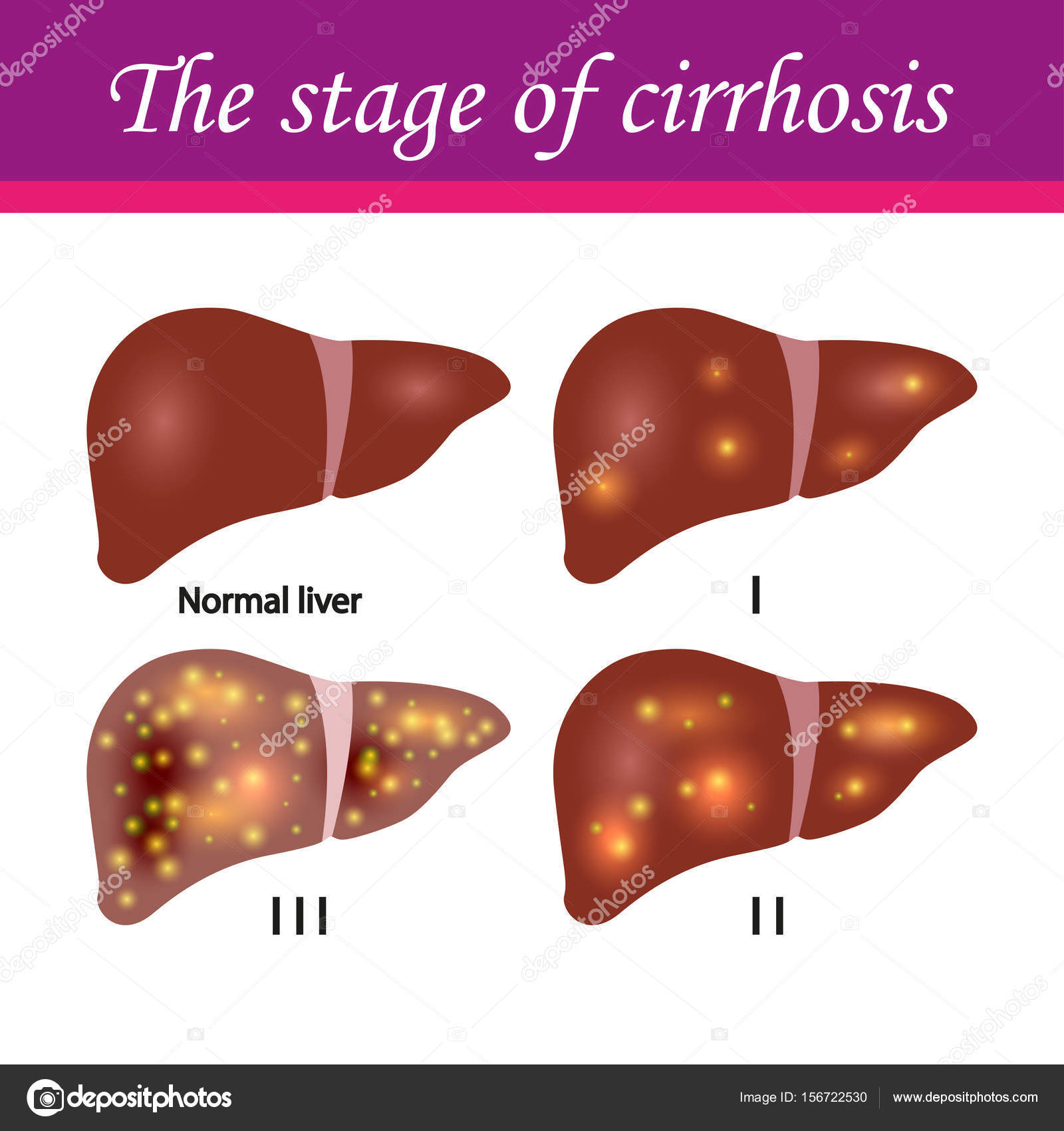 5%) [6] of NAFLD patients developed HCC [7]. A reasonable explanation for this difference in our study could be that our patients had in general mild changes in the liver biopsy at baseline. It is also conceivable that a longer follow-up time would probably lead to patients with HCC.
5%) [6] of NAFLD patients developed HCC [7]. A reasonable explanation for this difference in our study could be that our patients had in general mild changes in the liver biopsy at baseline. It is also conceivable that a longer follow-up time would probably lead to patients with HCC.
Cardiovascular disease
In agreement with many previous studies a markedly higher proportion of our women in the NAFLD group died of cardiovascular disease compared to women in the AFLD group, 17 patients vs. one patient respectively. A previous study [10] showed that cardiovascular disease was the leading cause of death in the AFLD group (men and women toghether), which is at odd with our results. In the current study the leading cause of death in the AFLD group was liver related. We can not find a plausible explanation for this difference, although it has been shown that diagnoses on death certificates can underestimate liver-related mortality [28] which might have been the case in the Danish study [10].
The most common cause of death in the NAFLD group was from cardiovascular disease, followed by malignancy which is in agreement with findings of other cohort studies (6, 7, 14, 16,). One study found 34% increased risk of cardiovascular mortality among NAFLD patients compared to the general Minnesota population over a 7.6 year follow-up [6].
Cirrhosis can be treated without liver transplant
Many people believe that the main cause of a liver disease known as cirrhosis is alcohol abuse.
However, Dr. Catherine Frenette, medical director of liver transplantation at Scripps Clinics in San Diego, said while over-consumption of alcohol may be the most publicized cause, it’s hardly the most common.
Rather, she said, that distinction goes to hepatitis C, a virus that causes inflammation of the liver that’s spread when blood from an infected person enters the body of someone who’s not infected – often by sharing IV drug needles. And, prior to 1992 when blood supply screening began in the U.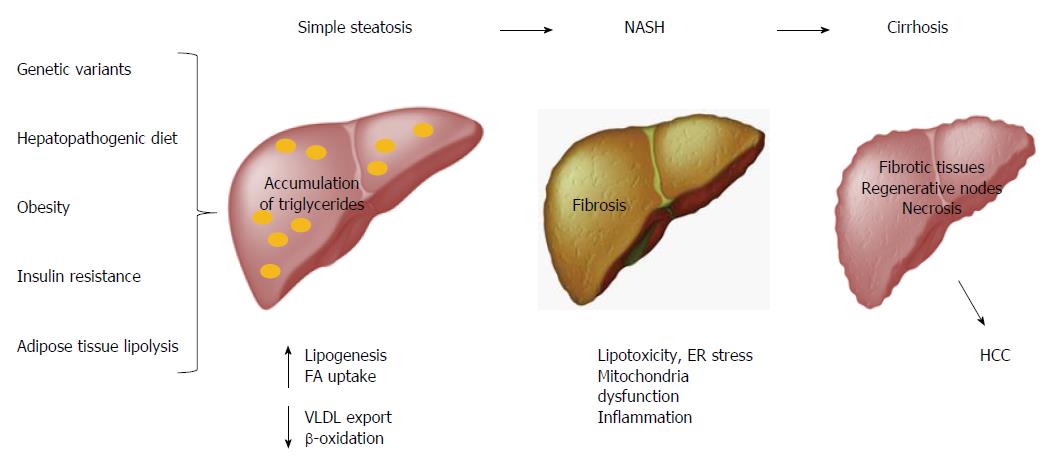 S., hepatitis C was often spread through blood transfusions and organ transplants.
S., hepatitis C was often spread through blood transfusions and organ transplants.
The sobering news is that just 50 percent of those with hepatitis C have been diagnosed and symptoms of cirrhosis can take decades to makes itself known – and that typically happens when the disease has advanced.
The good news, however, is that the disease if often treatable without a liver transplant, Frenette said.
“Most people with cirrhosis don’t need a transplant,” she said. “And cirrhosis is not a death sentence.”
Dr. Sanjeev Sharma, a physician affiliated with Tri-City Medical Center, said cirrhosis is a result of repeated liver damage. The body’s mechanism to repair the damage leads to fibrosis and nodules, or scarring, which results in improper function of the liver.
The liver maintains the body’s glucose level, helps in food digestion and removes toxins from the body, so proper liver function is important to overall health.
In addition to alcoholism and hepatitis C, Sharma said, other causes include obesity, hepatitis B, toxins and medications, metabolic diseases, autoimmune diseases with some causes being idiopathic, or still unknown.
When it comes to treating cirrhosis, Frenette said, health care providers must treat the underlying cause of the disease. Therefore, in many patients, treating cirrhosis means treating hepatitis C, eliminating consumption of alcohol, treating obesity, preventing hepatitis B, removing exposure to toxins or treating metabolic or autoimmune diseases.
“Medications and surgery are helpful in improving liver blood flow,” Sharma said. “Stopping the damage may allow the liver to repair, regenerate and heal.”
However, because it’s a “forgiving organ” Frenette said, the liver can withstand a lot of damage before symptoms of cirrhosis begin to appear. She said its function could be at 30 percent before symptoms begin to show.
Sharma said symptoms start with decreased appetite, weight loss, nose bleeds/bruising and weakness and progress to mental confusion, abdominal swelling and jaundice – and cirrhosis, which can ultimately lead to death. Cirrhosis is thought to be the seventh leading cause of death in the U.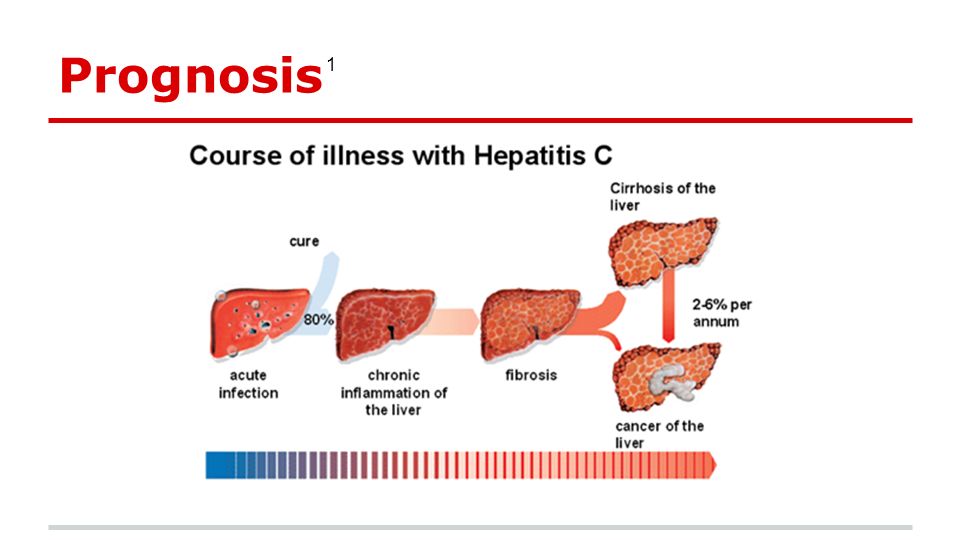 S., and it’s more common in men than in women, with an approximate ratio of 2-to-1. Today, a liver transplant is the only available treatment for end-stage liver disease. While a transplant rids the body of cirrhosis and comes with an 85 percent survival rate after five years, the demand for livers is higher than the supply of available organs.
S., and it’s more common in men than in women, with an approximate ratio of 2-to-1. Today, a liver transplant is the only available treatment for end-stage liver disease. While a transplant rids the body of cirrhosis and comes with an 85 percent survival rate after five years, the demand for livers is higher than the supply of available organs.
Sharma said about 17,000 people are awaiting liver transplants, compared to 6,000 liver transplants done annually in the U.S. As a result, Frenette said, 20 to 30 percent of those waiting for a liver transplant die while being on the wait list.
“If we had more (organ) donors, we would be able to save more lives,” she said
However, she said, like most diseases, early detection and treatment of cirrhosis is essential. Frenette said that patients should make sure their doctor checks their liver via a routine blood test during annual physicals. She said a lifestyle that includes eating well and exercise will also help ensure the health of the liver.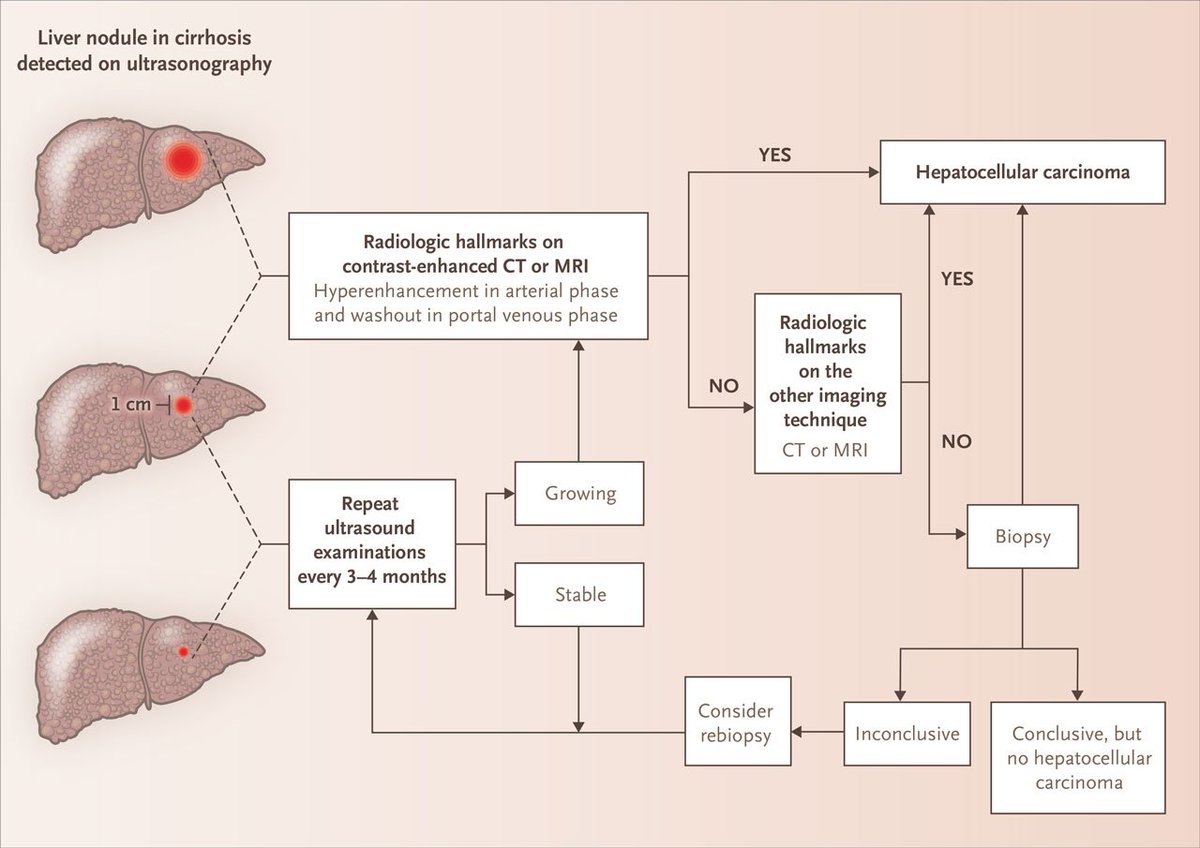
“You have to take care of yourself, and that’s going to take care of your liver,” she said.
Why Are More Millennials Dying of Alcohol-Related Liver Disease?
A binge-drinking culture among young people could also play a role, Dr. Tapper says, along with the hesitancy among some people to seek treatment for an alcohol addiction or to even realize that they have a problem with alcohol. That said, plenty of people still do. Neeraj Gandotra, M.D., Chief Medical Officer of Delphi Behavioral Health Group, tells SELF that he’s been “surprised” to see more young people coming into his facility for alcohol detox. “Usually, the characterization is an older middle-age male, but now we are seeing a different demographic of individuals in their 20s after having developed alcohol dependence earlier in life,” he says.
The researchers also noticed that this increase in alcoholic cirrhosis came after the stock market crash in 2008, which could imply that stress is a major factor. But again, this isn’t just having a glass of red after a particularly tough day at work—it’s consistently relying on alcohol to help get you through rough and stressful times. “It’s really important to not use alcohol as a stress reliever,” Dr. Bilchik says. “Young people need to find other, healthier ways to alleviate stress like getting regular exercise.”
But again, this isn’t just having a glass of red after a particularly tough day at work—it’s consistently relying on alcohol to help get you through rough and stressful times. “It’s really important to not use alcohol as a stress reliever,” Dr. Bilchik says. “Young people need to find other, healthier ways to alleviate stress like getting regular exercise.”
Nonalcoholic fatty liver disease, a condition that happens when more than 10 percent of the liver’s weight is fat, is also increasing in millennials and can lead to cirrhosis, Dr. Bilchik points out. It’s currently estimated that between 30 and 40 percent of adults in the U.S. have the condition, per the National Institute of Diabetes and Digestive and Kidney Diseases.
It’s important for you to know the symptoms of cirrhosis, and to take an honest look at your own drinking habits.
Cirrhosis is a late-stage scarring of the liver caused by many forms of liver diseases and conditions, like hepatitis, fatty liver disease, and chronic alcoholism, the Mayo Clinic says.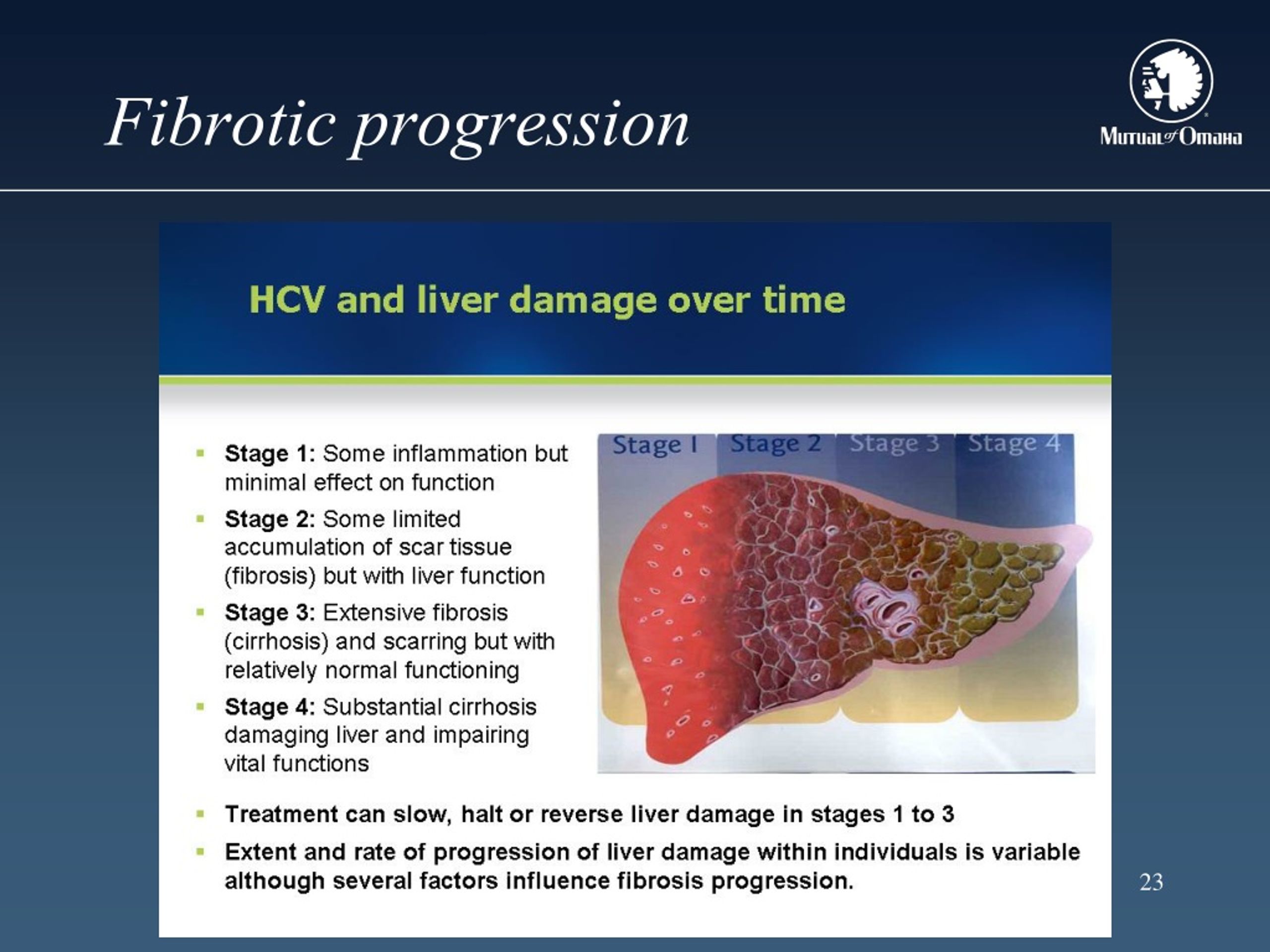 Cirrhosis happens in response to damage to your liver—each time your liver is damaged, it tries to repair itself, the organization explains. And, in the process, scar tissue forms. Over time and with more damage, it becomes hard for the liver to function, and this damage can’t be undone.
Cirrhosis happens in response to damage to your liver—each time your liver is damaged, it tries to repair itself, the organization explains. And, in the process, scar tissue forms. Over time and with more damage, it becomes hard for the liver to function, and this damage can’t be undone.
Cirrhosis usually has no signs of symptoms until the liver damage is intense, the Mayo Clinic says, which is why it’s so important to keep your drinking habits in check throughout your life.
When people do have symptoms of cirrhosis, they generally include fatigue, bruising and bleeding easily, having itchy skin, jaundice, fluid buildup in your abdomen, loss of appetite, nausea, swelling in your legs, weight loss, confusion, drowsiness, and slurred speech, spider-like blood vessels on your skin, and redness in the palms of your hands, the Mayo Clinic says.
Some of these symptoms are admittedly a little vague. Many young people who see the doctor for symptoms caused by alcohol-related liver disease aren’t totally upfront about their drinking habits at first, and they may not even be honest with themselves about it, Dr.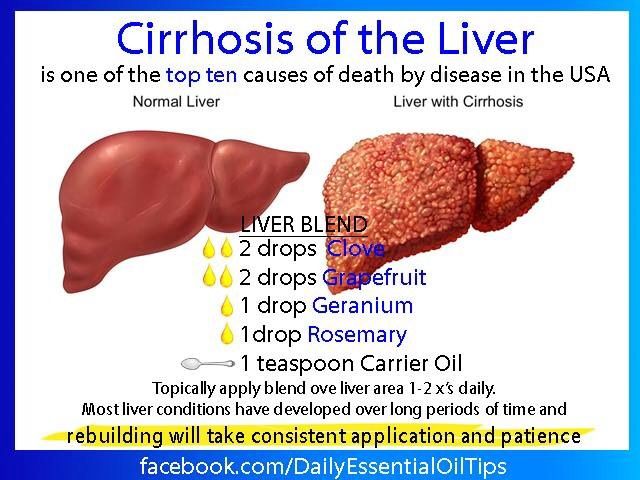 Bilchik says. The problem is, that can take even longer to help get to a diagnosis. “That’s one of the problems,” Dr. Bilchik says. “It’s usually only after intense interrogation that they admit to taking large amounts of alcohol.”
Bilchik says. The problem is, that can take even longer to help get to a diagnosis. “That’s one of the problems,” Dr. Bilchik says. “It’s usually only after intense interrogation that they admit to taking large amounts of alcohol.”
If you know your drinking habits have been less than healthy and are worried about the state of your liver, your doctor should be able to run some tests.
Cirrhosis is usually detected through a routine blood test or checkup, the Mayo Clinic says, but your doctor can order a liver function test (which checks your blood for excess bilirubin, a product of red blood cells breaking down, as well as for certain enzymes that may indicate liver damage), kidney function test (which checks your blood for creatinine), test for hepatitis B and C, and your international normalized ratio (which determines your blood’s ability to clot). You may even need an MRI, CT scan, biopsy, or ultrasound.
While cirrhosis isn’t reversible, your doctor can recommend some lifestyle changes that should help prevent or reduce further damage.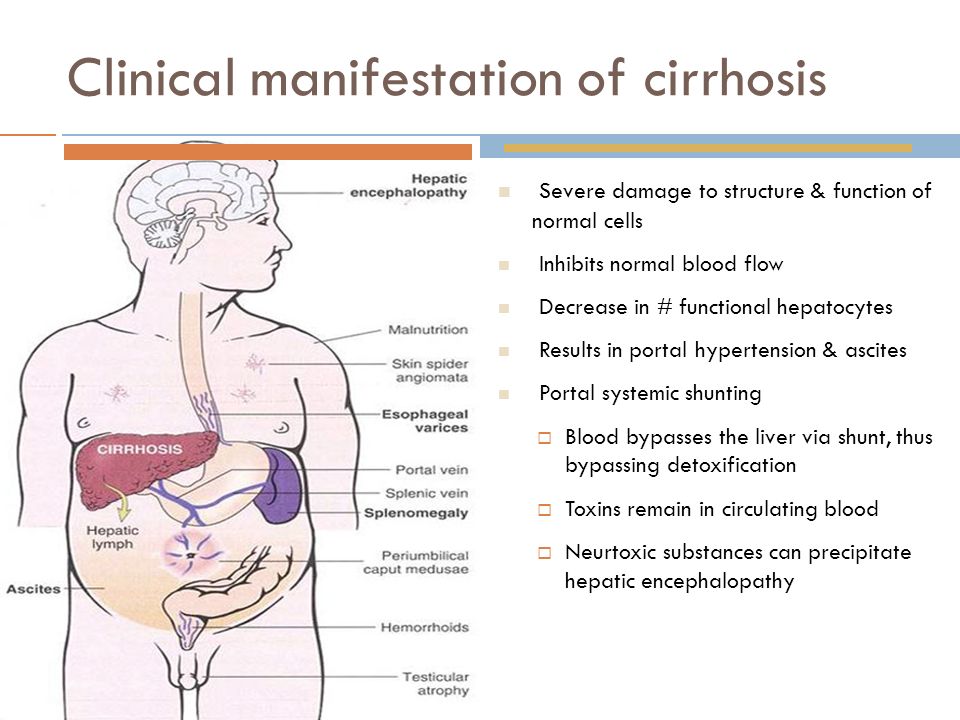
“The main point is that these deaths are entirely preventable,” Dr. Bilchik says. “This is a very disturbing trend.”
Related:
90,000 Asmalovskaya’s cause of death was liver cirrhosis
New causes of death of the star of the show “Dancing with the Stars” and the host of the TV show for children “ABVGDeyka” Kristina Asmalovskaya have been named. It became known that she did not die from the coronavirus, as previously reported.
Kristina Asmalovskaya died of liver cirrhosis caused by alcohol abuse. The infection only exacerbated the chronic disease, according to the sources of the Telegram channel “112”.
Earlier, the details of Asmalovskaya’s death were revealed by her colleague Tatyana Chernyaeva. “She was admitted to the hospital with a different diagnosis. It seems that she was already infected with covid there. She was poorly health and simply did not have time to get vaccinated.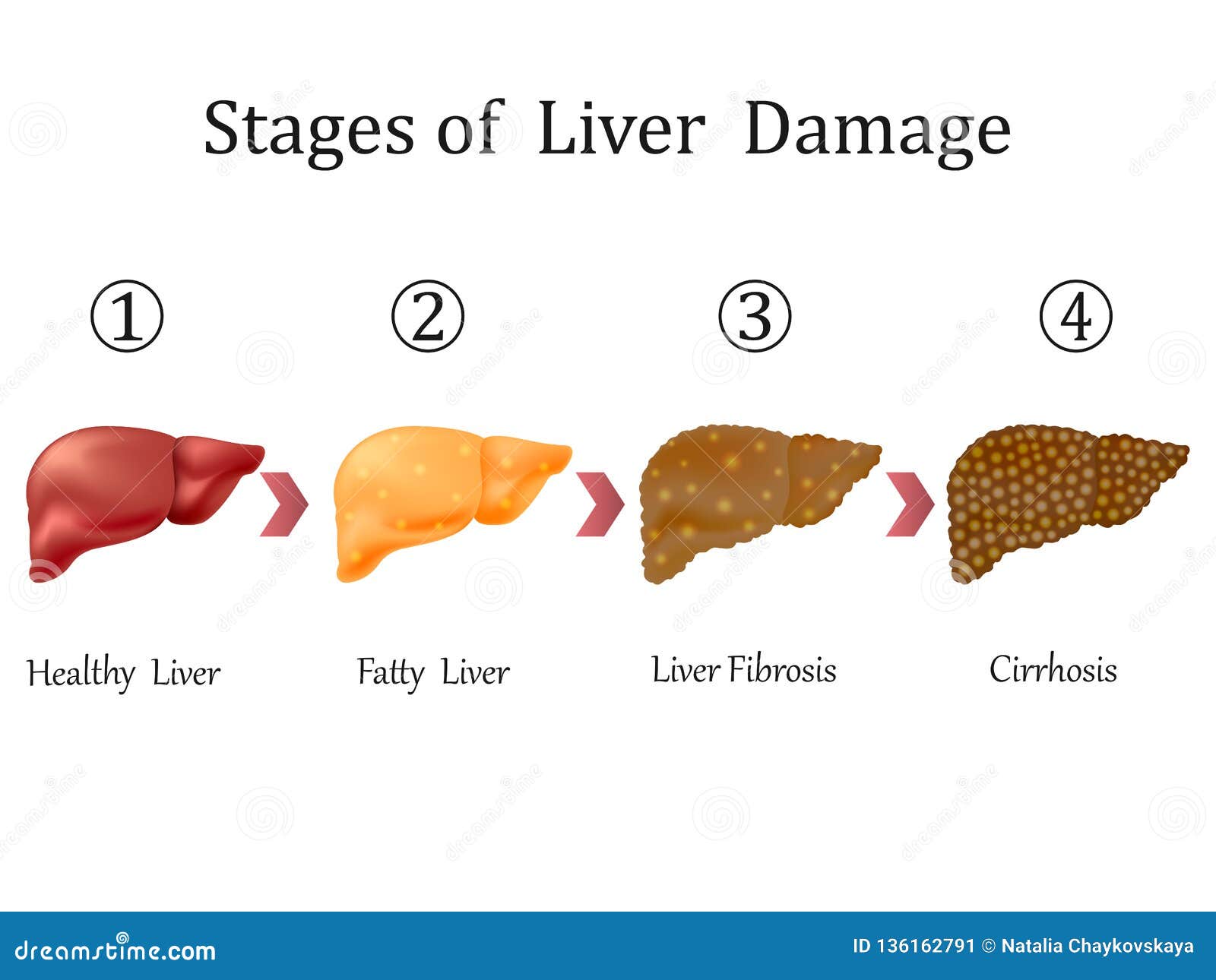 She was discharged from the hospital with liver and gallbladder problems, and then she became worse. , and she was taken to the hospital with suspicion of covid, “- said Chernyaeva in an interview with” 360 “.
She was discharged from the hospital with liver and gallbladder problems, and then she became worse. , and she was taken to the hospital with suspicion of covid, “- said Chernyaeva in an interview with” 360 “.
The TV presenter also added that Kristina Asmalovskaya had 25% of her lungs affected.She spent the last of two weeks in the hospital in intensive care on mechanical ventilation.
Her partner in the show “Dancing with the Stars”, actor Marat Basharov, also spoke about the death of Kristina Asmalovskaya. According to him, Asmalovskaya was unhappy. “She had relationships with men, but, as far as I know, there was no family. She was unhappy. She wanted children and a family. But somehow it didn’t work out,” Basharov said in an interview with the Teleprogramma.pro portal.
Kristina Asmalovskaya – international master of sports in sports ballroom dancing, three-time champion of the Russian Federation among professionals.In 2012, together with actor Marat Basharov, Asmalovskaya took part in the show “Dancing with the Stars” on the TV channel “Russia 1”. Then the duo took third place. Christina also starred in films. She is known to viewers for her roles in the TV series “Adjutants of Love” and “My Fair Nanny”. She acted as a presenter of the TV show for children “ABVGDeyka”.
Then the duo took third place. Christina also starred in films. She is known to viewers for her roles in the TV series “Adjutants of Love” and “My Fair Nanny”. She acted as a presenter of the TV show for children “ABVGDeyka”.
90,000 Treatment of ascites in people with progressive liver disease
What is the purpose of this Cochrane Review?
Find the best treatment available for ascites (abnormal accumulation of fluid in the abdomen) in people with advanced liver disease (cirrhosis or advanced liver scarring with complications).People with cirrhosis and ascites are at significant risk of death. It is therefore important to treat these people, but the benefits and harms of the available treatments are currently unclear. The authors of this review collected and analyzed all relevant studies to determine the best treatment. They found 49 randomized controlled trials (studies in which participants were randomly assigned to one of two treatment groups). During data analysis, the authors used standard Cochrane methods, which only compare two treatment options at a time.The authors also used advanced techniques to compare multiple treatment options at the same time (commonly referred to as “network (or indirect) meta-analysis”).
During data analysis, the authors used standard Cochrane methods, which only compare two treatment options at a time.The authors also used advanced techniques to compare multiple treatment options at the same time (commonly referred to as “network (or indirect) meta-analysis”).
Date of literature search
May 2019
Key Information
None of the studies were flawless and because of this there is a very high uncertainty in the results. About one in three participants in a clinical trial with cirrhosis and ascites who received standard fluid drainage (paracentesis) plus fluid replacement died within 11 months of treatment.The source of research funding was unclear in 21 studies; commercial organizations funded four studies. There was no concern about the source of funding for the remaining 24 clinical trials.
What was learned in this survey?
This review looked at adults of any gender, age, and ethnicity with advanced liver disease of various causes and ascites. The participants were offered various treatment options for ascites.The authors ruled out studies in people who had previously received liver transplants. The average age of the participants reportedly ranged from 43 to 64 years. Treatment options used in clinical trials have included paracentesis plus fluid replacement (currently considered standard treatment), various classes of diuretics (drugs that increase urine output), and transjugular intrahepatic portosystemic shunting (an artificial canal that connects various blood vessels carrying oxygen-depleted blood (venous system)) in the liver to reduce the pressure created in the portal venous system, one of the two venous systems that drain the liver.The review authors wanted to collect and analyze data on mortality (percentage of deaths at maximum follow-up), quality of life, serious and minor adverse events, time to liver transplantation, resolution of ascites, and the development of other complications of progressive liver disease.
The participants were offered various treatment options for ascites.The authors ruled out studies in people who had previously received liver transplants. The average age of the participants reportedly ranged from 43 to 64 years. Treatment options used in clinical trials have included paracentesis plus fluid replacement (currently considered standard treatment), various classes of diuretics (drugs that increase urine output), and transjugular intrahepatic portosystemic shunting (an artificial canal that connects various blood vessels carrying oxygen-depleted blood (venous system)) in the liver to reduce the pressure created in the portal venous system, one of the two venous systems that drain the liver.The review authors wanted to collect and analyze data on mortality (percentage of deaths at maximum follow-up), quality of life, serious and minor adverse events, time to liver transplantation, resolution of ascites, and the development of other complications of progressive liver disease.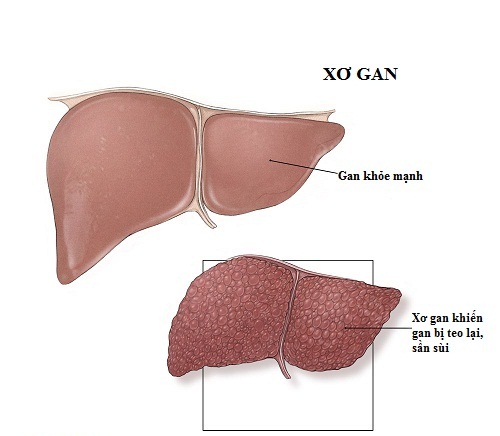
What are the main findings of this review?
A small number of participants (3521 participants) were included in 49 studies. Research data were scarce. Forty-two studies with 2870 participants provided data for analyzes.Follow-up of participants in clinical trials ranged from less than a week to seven years. The review shows that there is a low or very low level of evidence for the following:
– About one in three people with cirrhosis and ascites who received standard treatment with drainage of fluid (paracentesis) plus fluid replacement died within 11 months.
– None of the interventions resulted in a reduction in deaths, complications, or liver transplants compared to paracentesis plus fluid replacement.
– A transjugular intrahepatic portosystemic shunt may be nine times more effective in resolving ascites compared to paracentesis plus fluid replacement.
– The addition of aldosterone antagonists (a class of diuretics) may be 30 times more effective in resolving ascites compared to paracentesis plus fluid replacement.
– The use of aldosterone antagonists with loop diuretics (another class of diuretic drugs) as a replacement for paracentesis and fluid replacement may double the development of other complications of cirrhosis.
– None of the studies that compared other paracentesis plus fluid replacement treatment options reported health-related quality of life or symptomatic recovery from ascites.
– Future well-designed clinical trials are needed to determine the best treatment for people with cirrhosis and ascites.
(PDF) ALCOHOL AND MORTALITY FROM LIVER CIRROSIS IN BELARUS
lagged behind the dynamics of alcohol consumption, which is most likely due to the
lag effect.Over the past decade, the dynamics of these indicators
differed significantly: the mortality rate from CP was growing against the background of a decrease in the level of alcohol consumption
. Therefore, it is obvious that the level of alcohol consumption cannot be the key
factor in the sharp increase in the death rate from CP, even if we take into account the lag
effect that exists between these indicators. According to the results of Spearman’s correlation
analysis, the mortality rate from CP is closely related to the level of alcohol consumption
(r = 0.78; p = 0.000), while according to the results of cross-correlation analysis, the relationship between these indicators
is not statistically significant ( r = 0.21; SE = 186).
Taking into account the fact that the assessment of the general level of alcohol consumption is methodologically difficult enough in
, the level of alcohol sales does not lose its significance as a
indirect indicator of the level of alcohol-related problems.
A visual analysis of the data suggests that the dynamics of the mortality rate from CPU over
for most of the period under review was similar to the dynamics of the level of alcohol sales
(Figure 1).These indicators are closely related to each other according to the results of the Spearman correlation
analysis (r = 0.59; p = 0.000), although the results of the cross-correlation analysis of
“bleached” time series (r = 0.01; SE = 186) do not confirm the existence such a connection.
As already noted, the mortality rate from CP is influenced not only by the total
level of alcohol consumption, but also by the structure of its consumption. Strong alcoholic drinks,
, are usually consumed in large doses over a short period of time (the so-called intoxication-oriented drinking style
), which significantly increases the risk of death
from CP [10].Therefore, we can expect the existence of a close correlation between the dynamics of the level of
sales of vodka and the death rate from CP. However, analysis of graphical data shows
to the contrary: in the period from 1993 to 2004. the death rate from CP was growing against the background of a decrease in the level of
vodka sales (Figure 2). Despite the fact that, according to the results of the Spearman correlation analysis
, these indicators are statistically significantly related to each other (r = 0.48; p = 0.008), although
, according to the results of the cross-correlation analysis of “bleached” time series, the relationship
between these indicators is statistically not significant (r = 0.10; SE = 186).
A potential factor behind the sharp fluctuations in CP mortality could be
wine sales. Considering the fact that in the structure of wine sales up to 90%
are fortified fruit and berry wine drinks, which are popular with people
who abuse alcohol, we can expect a close correlation between the level of
wine sales and the death rate from CP. Visual analysis of the data allows us to say that
that in the period from 1992 to 2004.the trends of these indicators practically coincided (Figure 2). On this basis,
, it can be assumed that the sharp increase in the death rate from CP in this period
was due to an increase in the level of sales of fruit and berry wines. As for the relationship between the data
indicators throughout the entire period under consideration, according to the results of
Spearman’s correlation analysis (r = 0.48; p = 0.008), it exists, although this is not confirmed by the
results of the cross-correlation analysis of the “bleached” time series (r = 0.10; SE = 186).
It can be assumed that unregistered alcohol was the culprit for the sharp increase in the death rate from CP in the
period under review. However, according to graphical data
, the death rate from CP was growing rapidly against the background of a decrease in the level of consumption of
unregistered alcohol, which began in 1997 (Figure 2). Nevertheless, there are
reasons to believe that one of the factors behind the sharp increase in the death rate from CP for
over the past decade was the consumption of alcohol surrogates (industrial alcohol,
antiseptics, household chemicals).In the fall of 2006, epidemics of poisoning with surrogates
covered a significant part of the territory of Russia and Belarus. Thousands of people (mostly
heavy drinkers) in different regions ended up in hospitals with a diagnosis of “toxic hepatitis”. In one of the works
, the features of the clinical picture of poisoning with surrogates were studied,
were recorded in different regions of the Grodno region in 2006. 95
patients (76 men and 19 women) with toxic liver damage caused by
use of alcohol-containing liquid were examined of unknown origin [6].First signs
3
Alcoholic liver disease / Diseases / Clinic EXPERT
Stages
There are three main stages of alcoholic liver disease, although they can often exist simultaneously.
I. Alcoholic fatty liver disease (AFLD) – the first (initial) stage of liver damage by alcohol.
Alcohol consumption in 90-100% leads to the accumulation of fat in the liver tissue. Fatty liver disease rarely manifests itself with any symptoms, but there may be lack of appetite, nausea, a feeling of heaviness in the right hypochondrium , and sometimes pain in this area of the abdomen.
Detection of alcoholic fatty liver disease is an important signal that a person is consuming alcohol at a level that is harmful to health.
This stage of the disease is reversible . If a person does not drink alcohol for a month, fat accumulation in the liver gradually disappears.
II. Alcoholic hepatitis
One in 4 drinkers with fatty liver will have alcoholic hepatitis. Long-term alcohol consumption for several years (sometimes months) can lead to an inflammation of the liver tissue known as alcoholic hepatitis.
Fatigue, decreased appetite, weight loss, sometimes fever, recurrent diarrhea may also occur.
Sometimes, when drinking a large amount of alcohol for a short period of time, acute alcoholic hepatitis may occur – with the development of vomiting, jaundice and pain in the liver, and subsequently acute liver failure and sudden death.
Alcoholic hepatitis is usually reversible, but longer abstinence from alcohol is necessary.
III. Cirrhotic stage is the final stage in alcoholic liver disease. Liver cirrhosis develops in 25% of patients with fatty liver disease.
Liver cirrhosis occurs when prolonged inflammation causes the liver to replace tissue with connective tissue (scarring), causing the liver to fail. Decreased liver function is always life-threatening.
The cirrhotic stage of alcoholic liver disease is irreversible.At the same time, stopping alcohol consumption can slow the progression of the disease and the development of complications. In some cases, against the background of alcoholic cirrhosis, hepatocellular carcinoma (liver cancer) develops. If cirrhosis of the liver is accompanied by the presence of chronic viral hepatitis (B or C), this increases the risk of developing liver cancer.
In people who drink alcohol in large doses, the intake of hepatotoxic substances (including drugs, for example, paracetamol in a standard dosage) can lead to the development of severe liver damage!
Alcoholic liver disease
The liver is the main organ of the digestive system, without the normal functioning of which you can quickly die.However, all her “good deeds” cannot be enumerated. Scientific studies have shown that the liver is involved in 97 percent of all processes in the body. So, it is the hepatic gland that disassembles the eaten food into its components, and then turns it into energy, thanks to which human cells function. In addition, this organ is an enemy of infections and bacteria, is involved in the production of bile, acts as a storehouse of nutrients, participates in the production and breakdown of hormones, etc. But, unfortunately, many people are rather frivolous about saving it, subjecting the liver to constant tests, including through alcohol attacks.We hope that the information on this topic by Svetlana Anatolyevna Gordeeva, a gastroenterologist at Clinical Hospital No. 172 of the FMBA of Russia, will not leave you indifferent, and will even push someone to change their lifestyle. |
The civilized society has faced the problem of alcoholism since the beginning of the production of alcoholic beverages, and since then the urgency of this problem has become even more acute.
Of all foods eaten by humans, alcohol is the most common cause of liver damage.Alcoholism is a widespread disease in many countries of the world. There are more than 10 million alcoholics in Russia. Approximately one million suffer from alcoholic cirrhosis of the liver (ACL). About 20 thousand people die from APB every day. Systematically, that is, almost every day, 38 percent of women and 72 percent of men use alcohol.
Meanwhile, most researchers believe that taking 40-80 grams of ethanol per day for 10-12 years or more than 80 grams for at least 5 years raises the risk of developing alcoholic liver damage.
The diagnosis of this disease is difficult to establish, since the patient in most cases does not recognize his alcohol dependence, does not notice the signs of the disease. Also, the feeling of criticism gradually decreases, since the patient believes that nothing special is happening, he just drinks a little to relieve stress or anxiety. The first stage of ALD, which occurs in almost 90 percent of cases of regular alcohol abuse for more than 10 years, is fatty liver disease. Most often it is asymptomatic, sometimes patients note a decreased appetite, periodically dull pain in the right hypochondrium, nausea.About 15 percent may have jaundice. This is a potentially reversible condition.
Alcoholic hepatitis can occur in various forms, from a mild reversible disease to a life-threatening pathology. The most common signs of alcoholic hepatitis are pain syndrome (dull pain in the right hypochondrium), dyspeptic disorders (nausea, vomiting, diarrhea), weakness, appetite disorders and weight loss. Hepatic jaundice is a common symptom. Chronic alcoholic hepatitis lasts a long time with periods of exacerbation and remission.
With the progression of alcoholic liver disease, the risk of developing cirrhosis is 50 percent. Cirrhosis of the liver can manifest itself with minimal signs of alcoholic hepatitis or symptoms of complications of the final stage of the disease. Since the majority of cirrhosis in alcoholism in humans proceeds imperceptibly, unfortunately, most often the diagnosis is made when the disease begins to progress and is at a more severe stage. Alcoholic liver disease often leads to the development of gastrointestinal bleeding, hepatic encephalopathy (toxic substances that accumulate in the body as a result of a decrease in functional activity are deposited in the tissues of the brain), and impaired renal function.People with ALD are at risk of developing liver cancer.
What to do if you find signs of alcoholic liver disease in yourself or a close relative? You should immediately consult a doctor. He will carry out a detailed examination and give directions for the necessary analyzes.
The first rule in the treatment of ABD is the absolute refusal to take alcoholic beverages, even in small amounts. Moreover, a complete refusal must be truly complete. It is worth diversifying your diet with foods containing potassium, you should limit salty foods and the amount of fluid you drink.In addition, medication is prescribed (drugs that restore liver function). But the best treatment is precisely the prevention of the disease. Avoid excessive drinking. Alcoholism harms the work of the whole organism. Slowly poisons the liver and does not allow the symptoms of cirrhosis to be recognized in time for timely treatment. Advanced cirrhosis of the liver leads to cancer and premature death. Fortunately, in the early stages, cirrhosis is treatable, provided that all the recommendations of the attending physician are followed.
Be healthy!
| Next> | |
|---|
“I was depressed, I said:“ I want to die ”: Kristina Asmalovskaya’s friend about her last days
Kristina Asmalovskaya
According to a friend of Kristina Asmalovskaya Ekaterina, the star of the dance show had problems with work, because of which she was constantly depressed.
“Lately she has been saying, ‘I want to die.’She was depressed. I tried to support her, but to no avail. It’s hard to remember all this. She did not understand how to go forward, what to do. She was often at home. But Christina had dreams, she wanted to become a teacher at her private school. True, she failed to realize this story. Perhaps because of the pandemic and all the restrictions. In plans for November, Christina had a meeting with one very famous dancer, who agreed that she would teach at his school. But a misfortune happened … “- the artist’s friend shared.
Ekaterina was in touch with her friend almost all the time. In their last correspondence, they discussed one of the programs and laughed. “Christina sent me a funny video, a fragment from the show. We laughed together. So … “- Asmalovskaya’s friend recalled.
The artist performed in tandem with Marat Basharov
In November, Christina was admitted to the clinic with a coronavirus infection. “The ambulance took her. Christina said that the first diagnosis she was given was pulmonitis. Then I tried to call her several times to find out about her condition, but she did not answer the phone.Then she answered, said that she was in a mask, with a pipe, in the hospital. But she did not name the diagnosis, she did not have the strength to tell something. Only later did her friend Alexei tell me that Christina had a coronavirus, ”concluded Ekaterina.
do not miss The star of the show “Dancing with the Stars” Kristina Asmalovskaya hid alcoholism and burned out from liver cirrhosis
However, as the media later found out, covid only complicated the long-standing chronic disease of the TV star – cirrhosis of the liver. As a result, the body could not cope with the load.
Based on materials from MK.
Photo: a frame of the film, a frame from the program “Dancing with the Stars”
“The brain dies”: what happens to the body if you drink alcohol often
https://rsport.ria.ru/20200707/1574018899.html
” The brain dies “: what will happen to the body if you drink alcohol often
” The brain dies “: what will happen to the body if you drink alcohol often – RIA Novosti Sport, 24.11.2021
” The brain dies “: what happens to the body if drink alcohol often
Dietitian and nutritionist Yana Fry told how the functioning of internal organs and the body as a whole changes with prolonged use of alcohol… RIA Novosti Sport, 24.11.2021
2020-07-07T17: 15
2020-07-07T17: 15
2021-11-24T16: 26
health
alcohol
food
heart
health
brain
/ html / head / meta [@ name = ‘og: title’] / @ content
/ html / head / meta [@ name = ‘og: description’] / @ content
https : //cdnn21.img.ria.ru/images/151770/16/1517701652_0: 153: 3001: 1841_1920x0_80_0_0_bca3c7c7e0aeb873ffa109308d5215c8.jpg
MOSCOW, July 7 – RIA Novosti.Nutritionist and nutritionist Yana Fry told how the functioning of internal organs and the body as a whole changes with prolonged use of alcoholic beverages. She noted that, first of all, alcohol negatively affects the functioning of the brain. She claims that there is no safe dose of alcohol. Even after drinking a glass of wine, a person loses some of their brain cells. With the regular use of strong drinks (even once a week), brain functions are impaired: thinking slows down, attention decreases, memory deteriorates.The cardiovascular system also suffers. The toxins from the breakdown of alcohol cause heart rhythm disturbances. In addition, blood pressure rises and blood clots due to blood clots. In addition, alcohol can cause insomnia, severe headaches, indigestion, tooth decay and cirrhosis of the liver, from which about 400,000 people die in Russia every year. The nutritionist also explained what would happen if you stop drinking altogether for at least a few weeks.
https://rsport.ria.ru/20200707/1573997173.html
https://rsport.ria.ru/20200707/1573973668.html
https://rsport.ria.ru/20200706/1573927770. html
RIA Novosti Sport
7 495 645-6601
FSUE MIA “Russia Today”
https: //xn--c1acbl2abdlkab1og.xn--p1ai/awards/
2020
RIA Novosti Sport
7 495 645-6601
FSUE MIA “Russia Today”
https: // xn – c1acbl2abdlkab1og.xn – p1ai / awards /
News
ru-RU
https://rsport.ria.ru/docs/about/copyright.html
https: //xn--c1acbl2abdlkab1og.xn--p1ai/
RIA Novosti Sport
7 495 645-6601
FSUE MIA “Russia Today”
https: //xn--c1acbl2abdlkab1og.xn--p1ai/awards/
https: //cdnn21.img.ria.ru/images/151770/16/1517701652_171 0:2828:1993_1920x0_80_0_0_7ab4a9c37126d4fa222e86384b7e5d6b.jpg
RIA Novosti Sport
7 495 645-6601
FSUE MIA “Russia Today”
https: //xn--c1acbl2abdlkab1og.xn--p1ai/awards/
RIA News Sport
7 495 645-6601
FSUE MIA Rossiya Segodnya
https: //xn--c1acbl2abdlkab1og.xn--p1ai/awards/
alcohol, food, heart, health, brain
MOSCOW, July 7 – RIA Novosti. Dietitian and nutritionist Yana Fry told how the functioning of internal organs and the body as a whole changes with prolonged use of alcoholic beverages.
She noted that, first of all, alcohol negatively affects the functioning of the brain.
“When alcohol enters the bloodstream, it destroys the walls of red blood cells. They become loose and sticky, gradually grow together and form blood clots. These clots clog the small vessels of the brain. Brain cells begin to die off, you experience oxygen starvation, you have feeling pleasantly relaxed, but at this time your brain is literally dying, “- warns the expert.
July 7, 2020, 11:45 a.m. The foods that can be eaten at night without harm to the figure are named
She claims that there is no safe dose of alcohol. Even after drinking a glass of wine, a person loses some of their brain cells. With the regular use of strong drinks (even once a week), brain functions are impaired: thinking slows down, attention decreases, memory deteriorates.
The cardiovascular system also suffers. The toxins from the breakdown of alcohol cause heart rhythm disturbances.In addition, blood pressure rises, and due to thickening of the blood, blockage of blood vessels occurs.
July 7, 2020, 08:45 AM The nutritionist told what would happen if you eat at the same time
In addition, alcohol can cause insomnia, severe headaches, indigestion, tooth decay and cirrhosis of the liver, from which people die every year in Russia about 400 thousand people.
